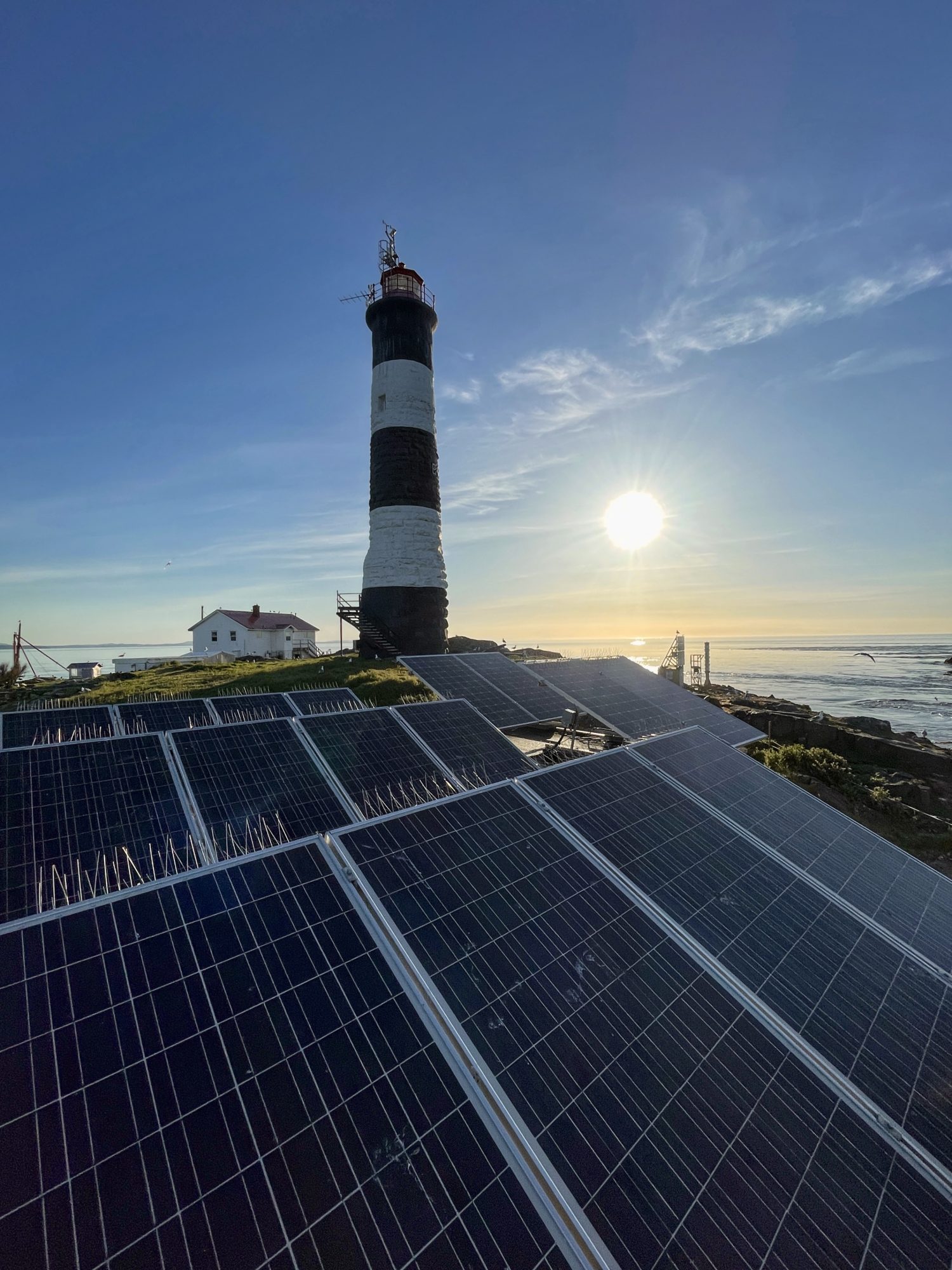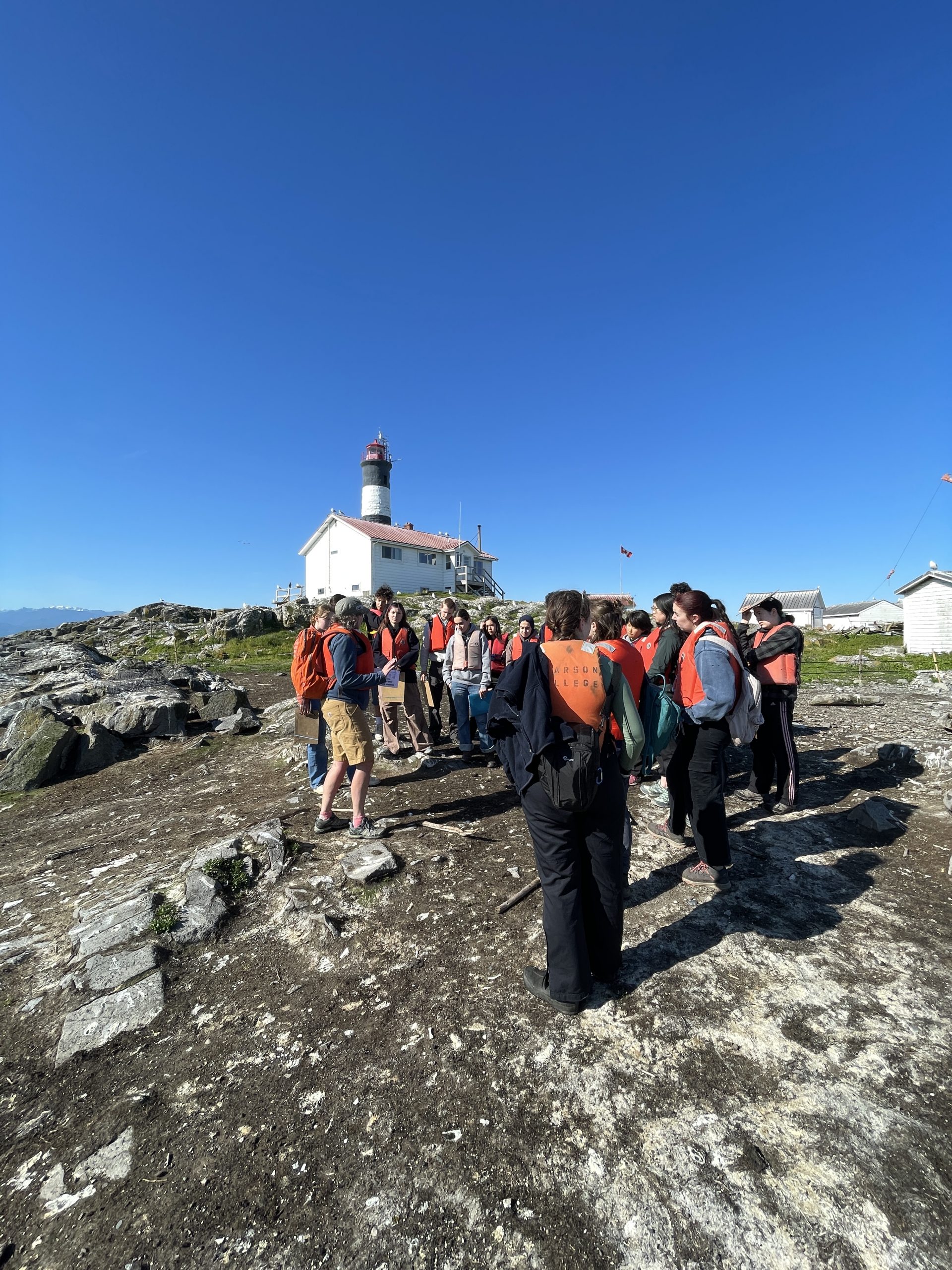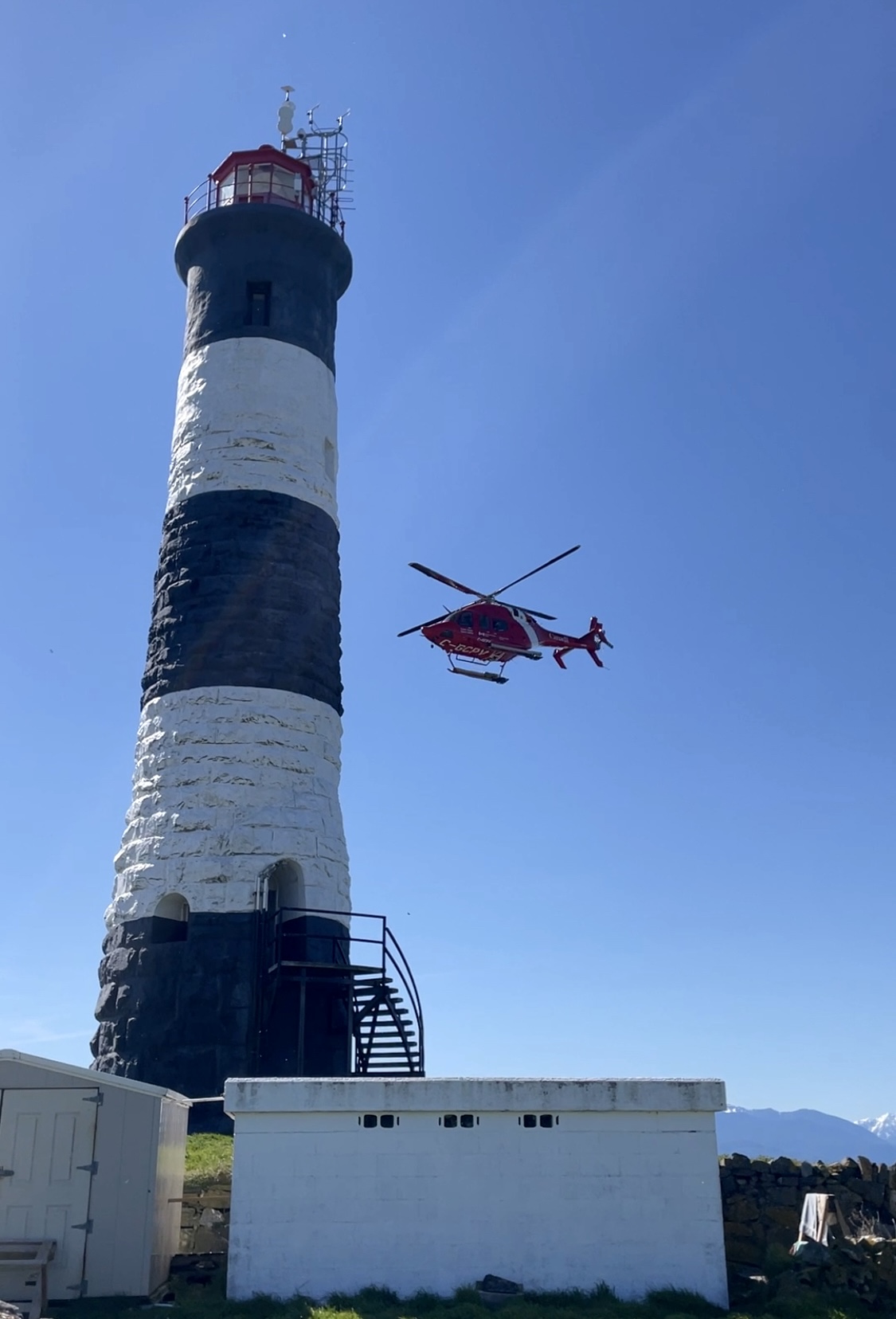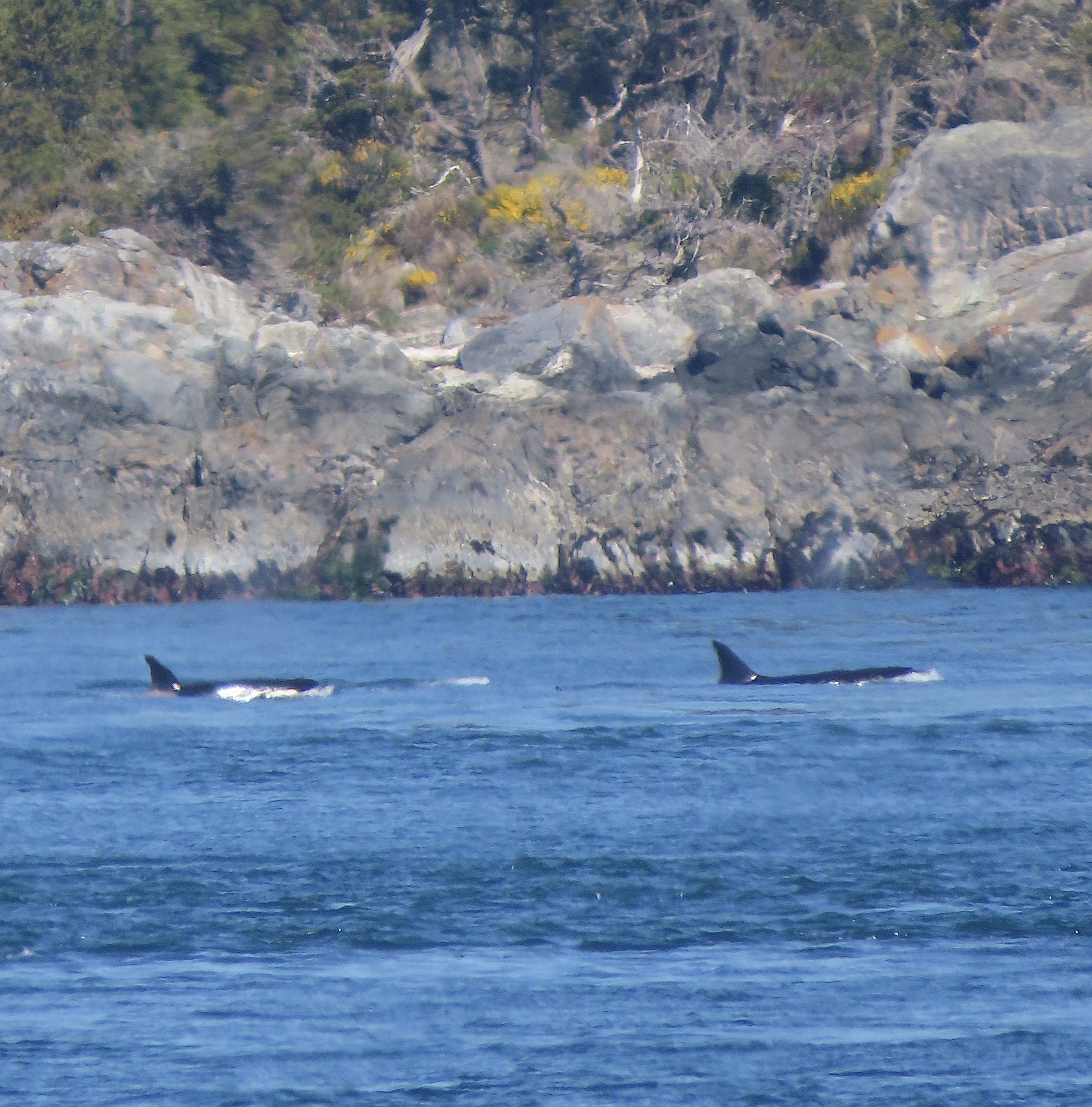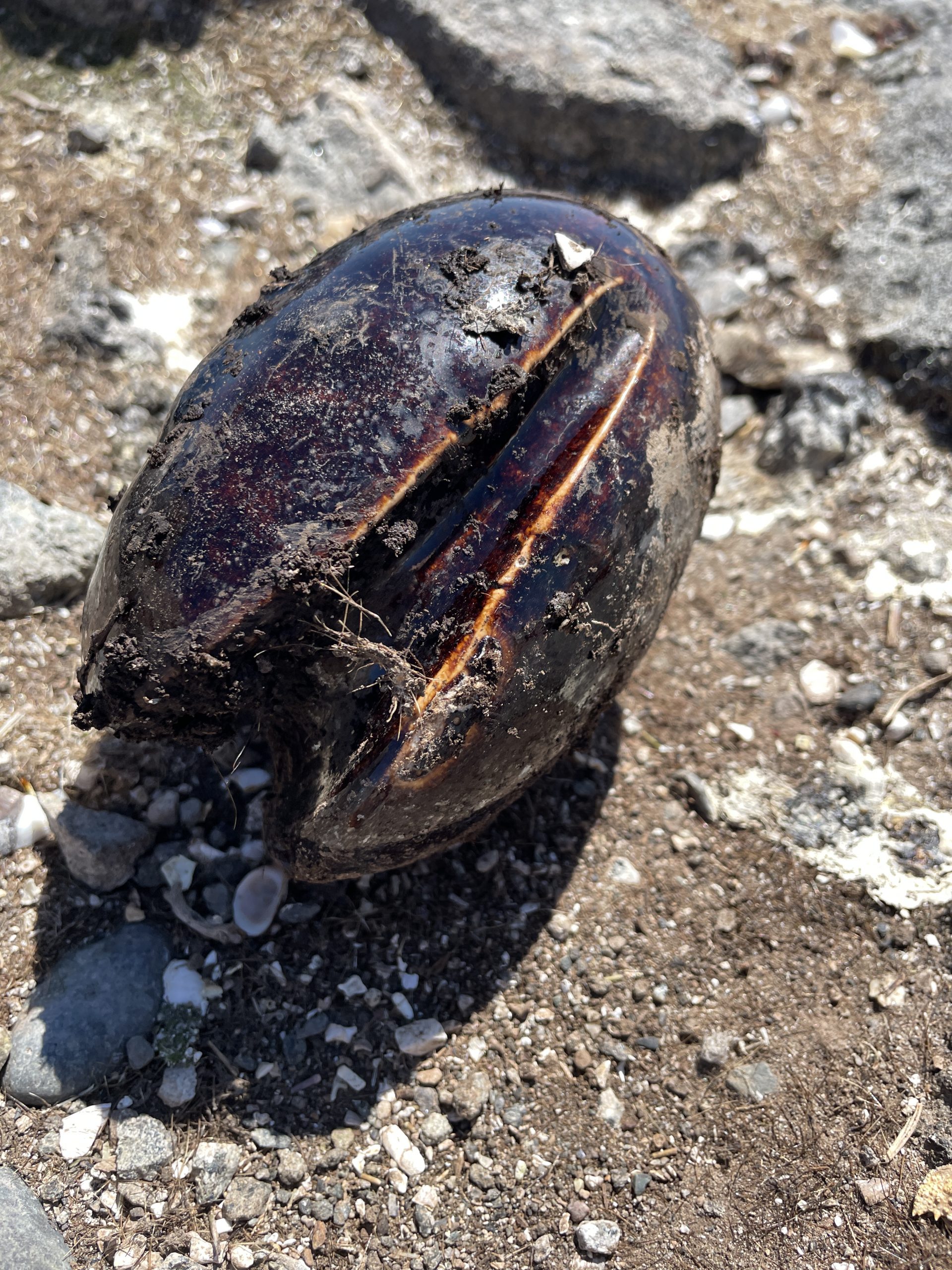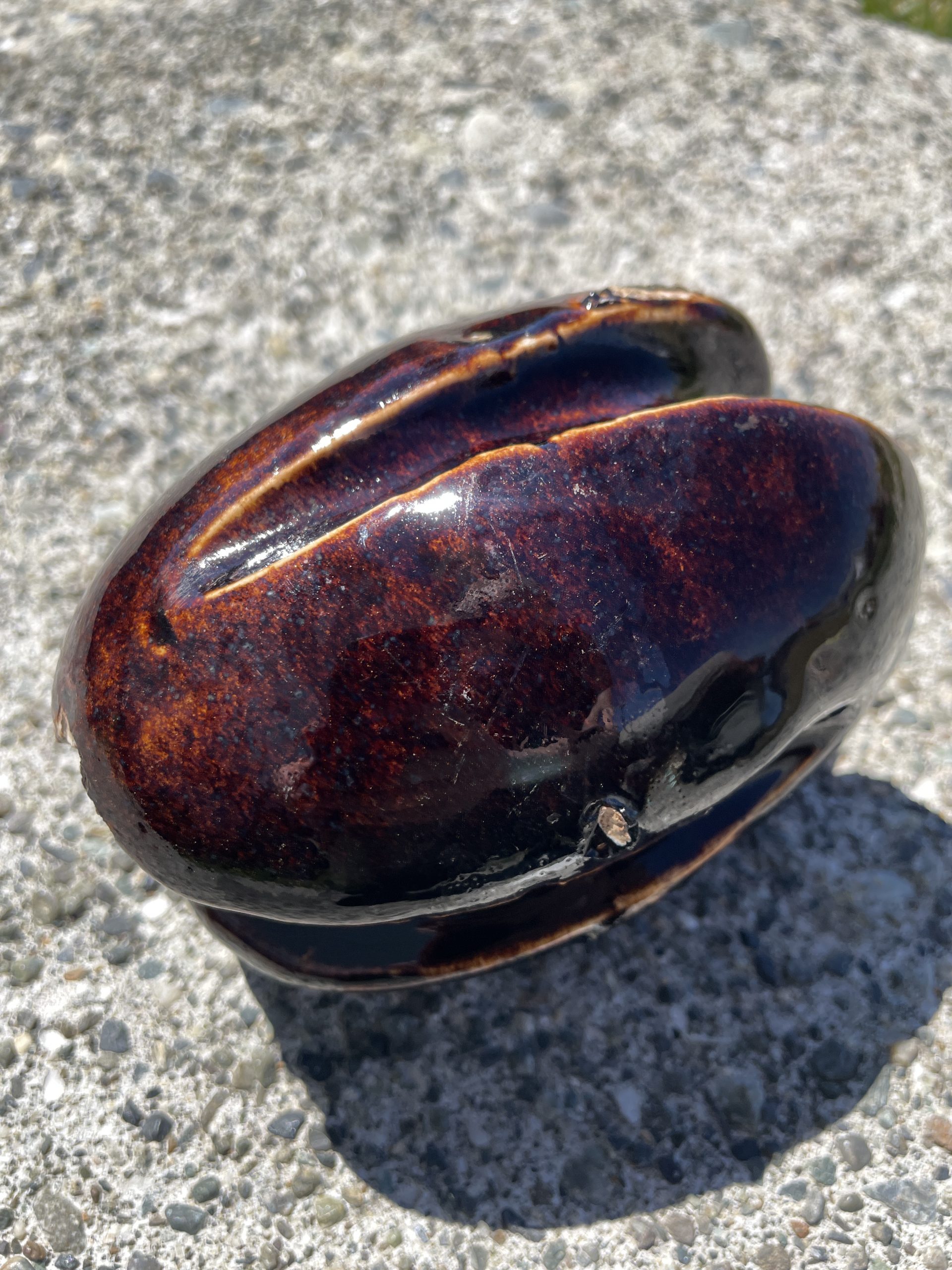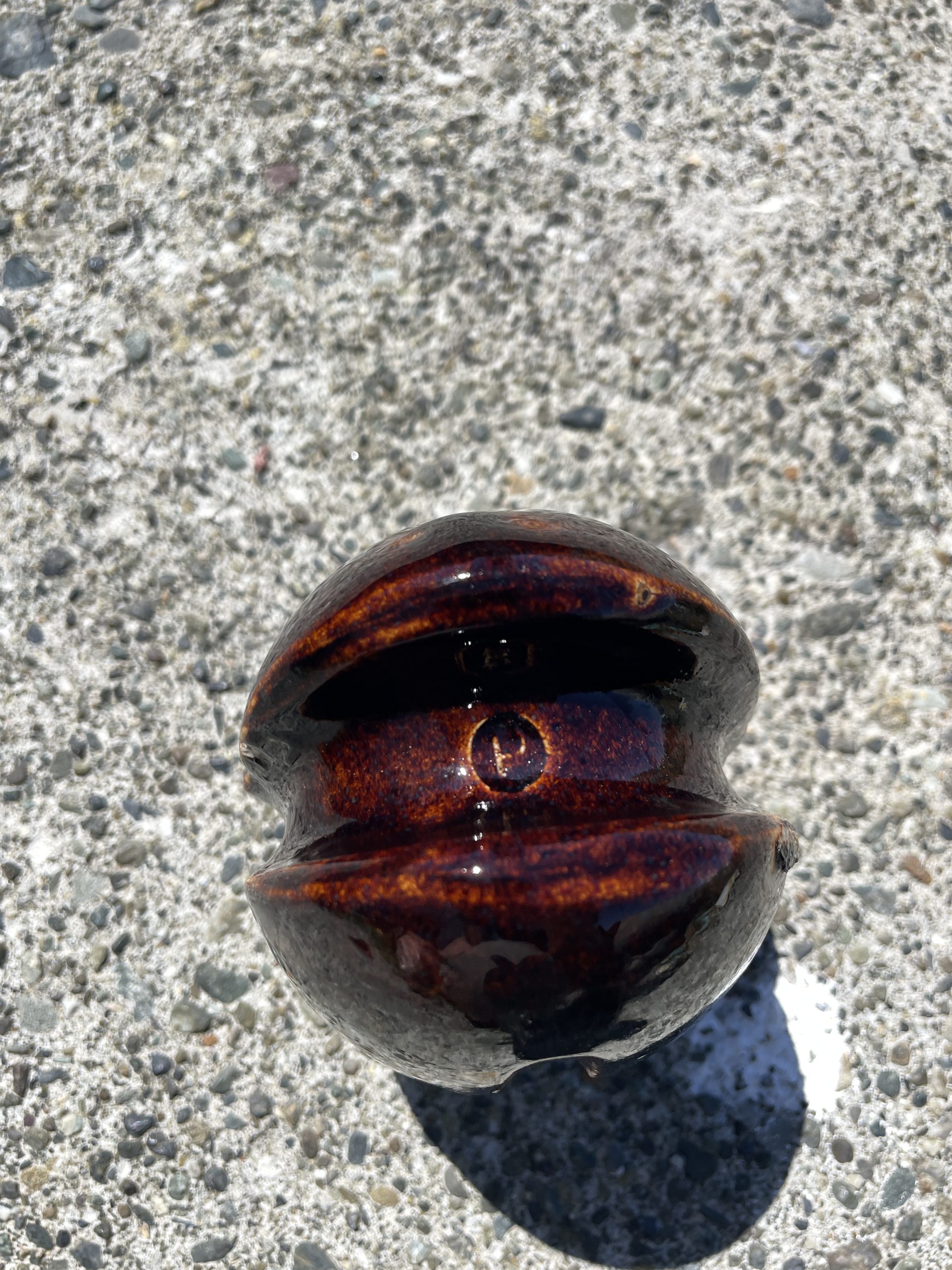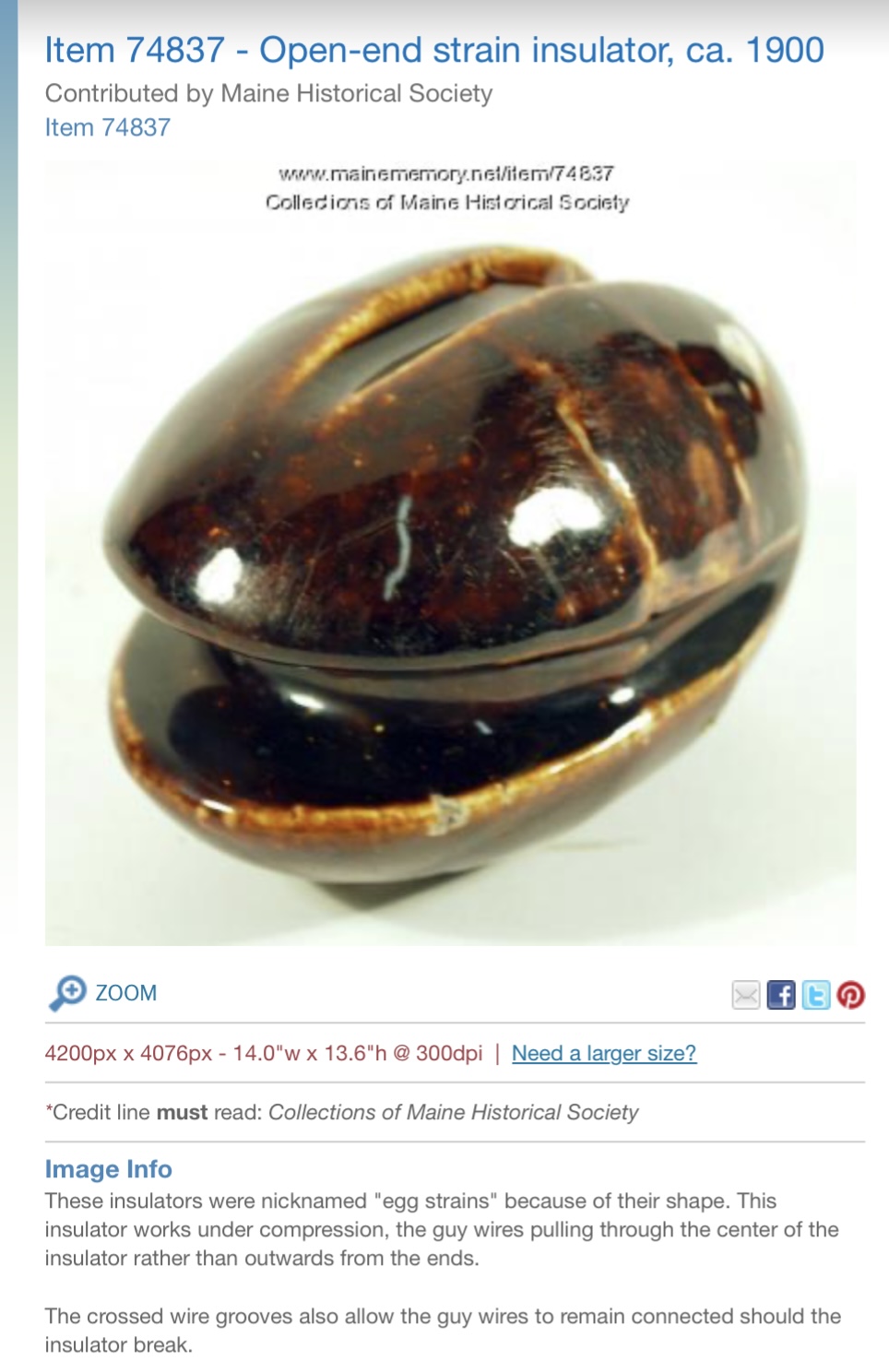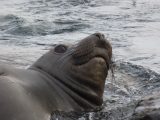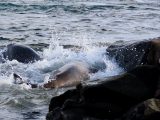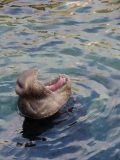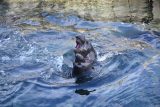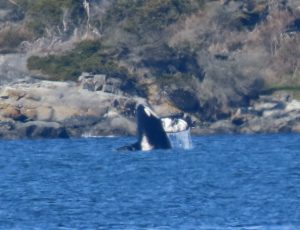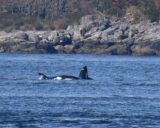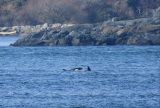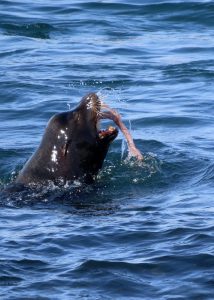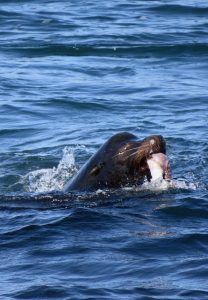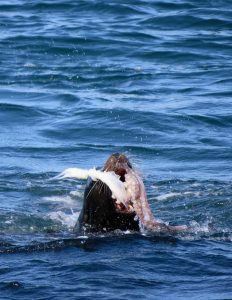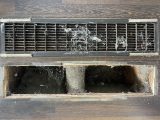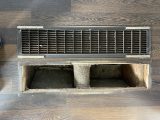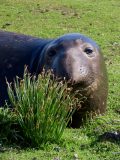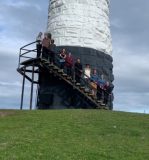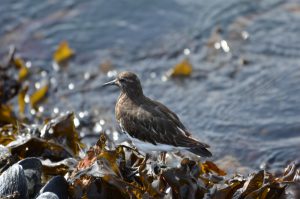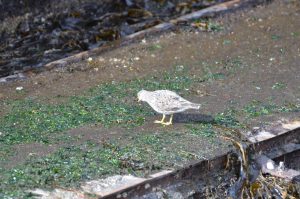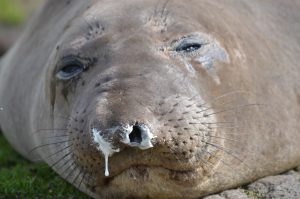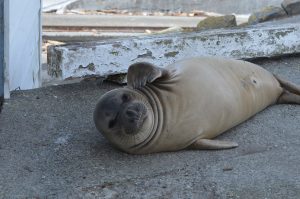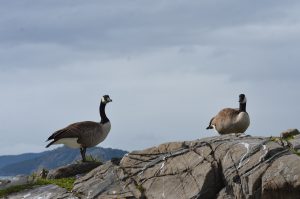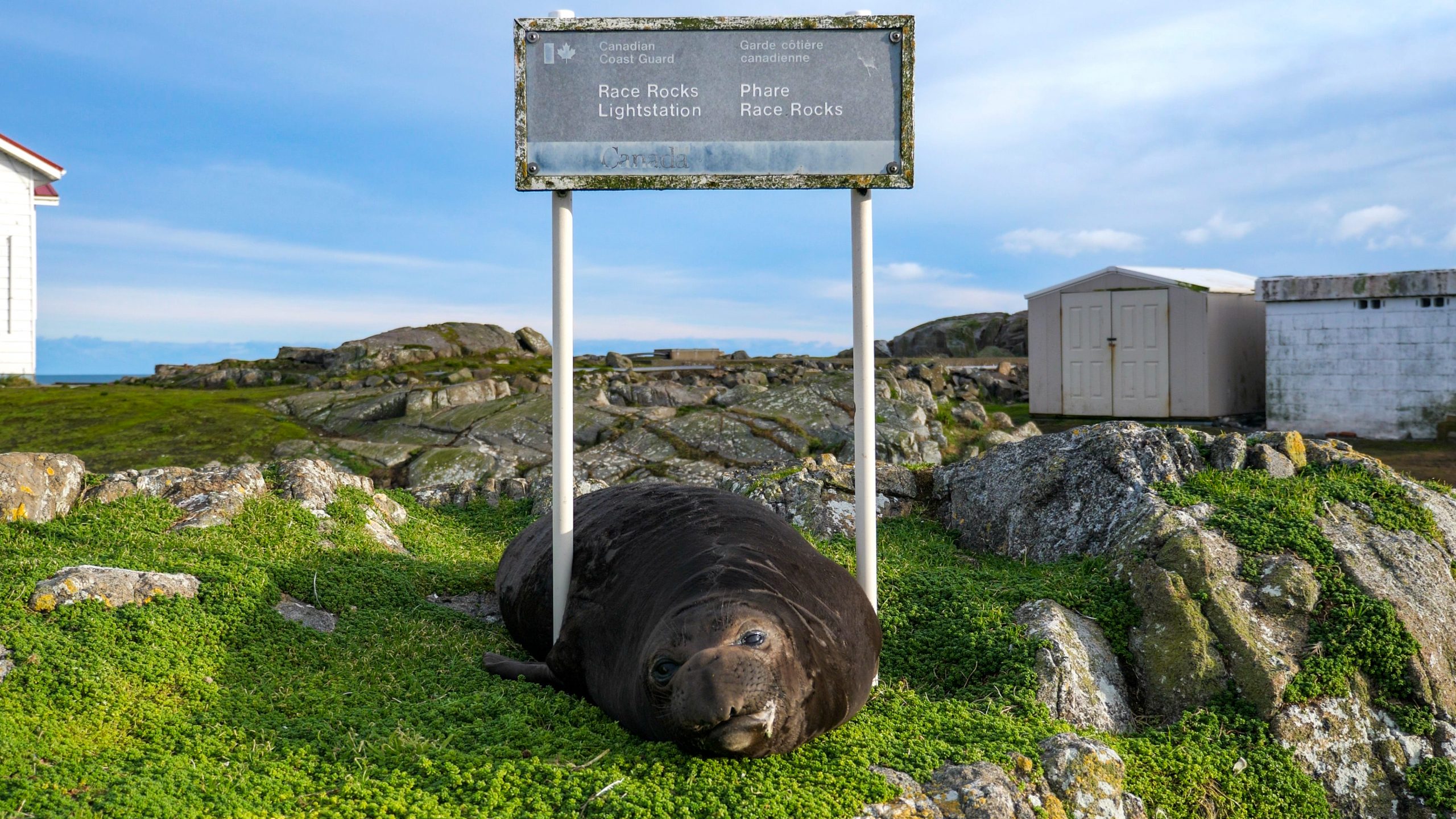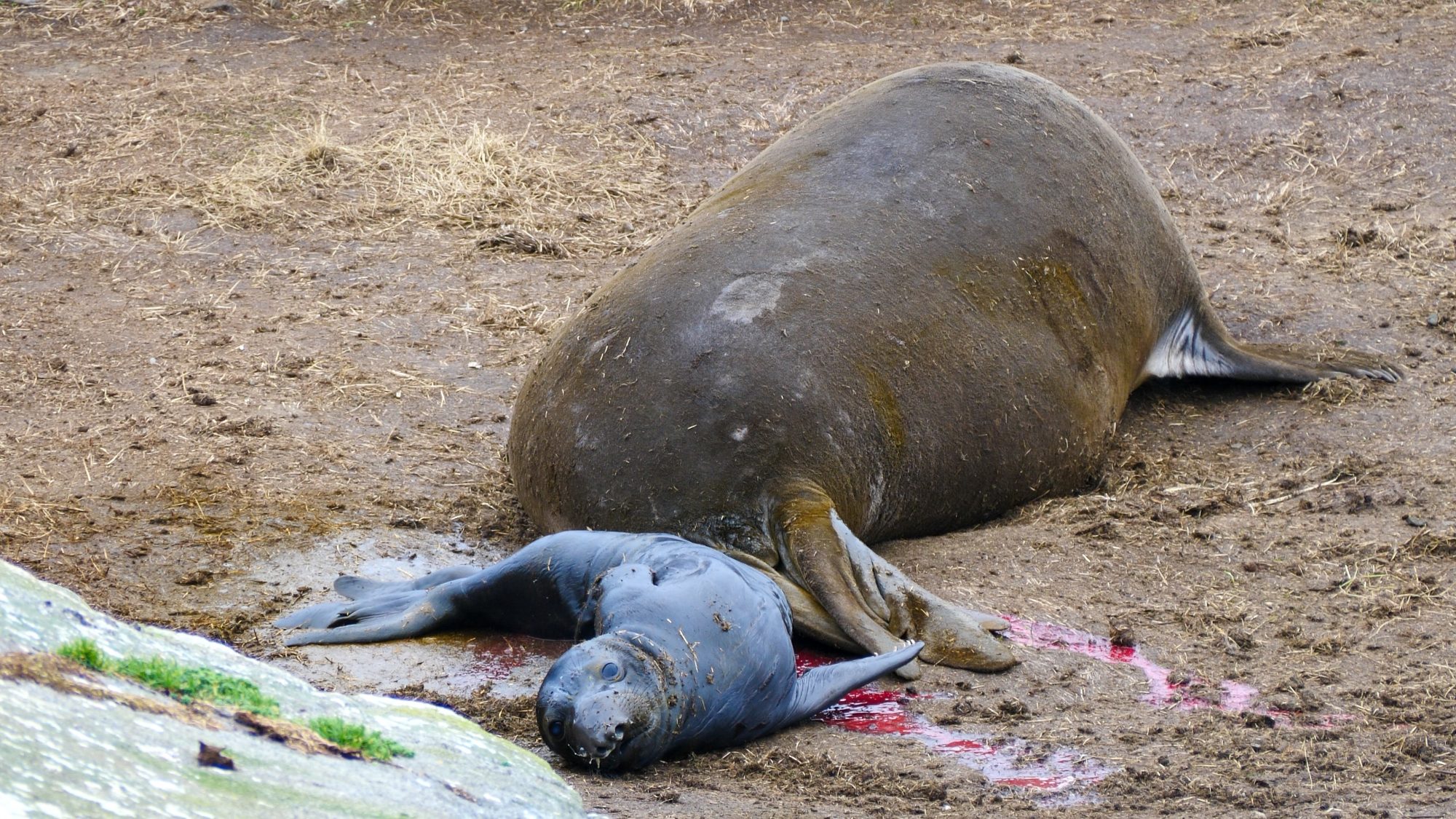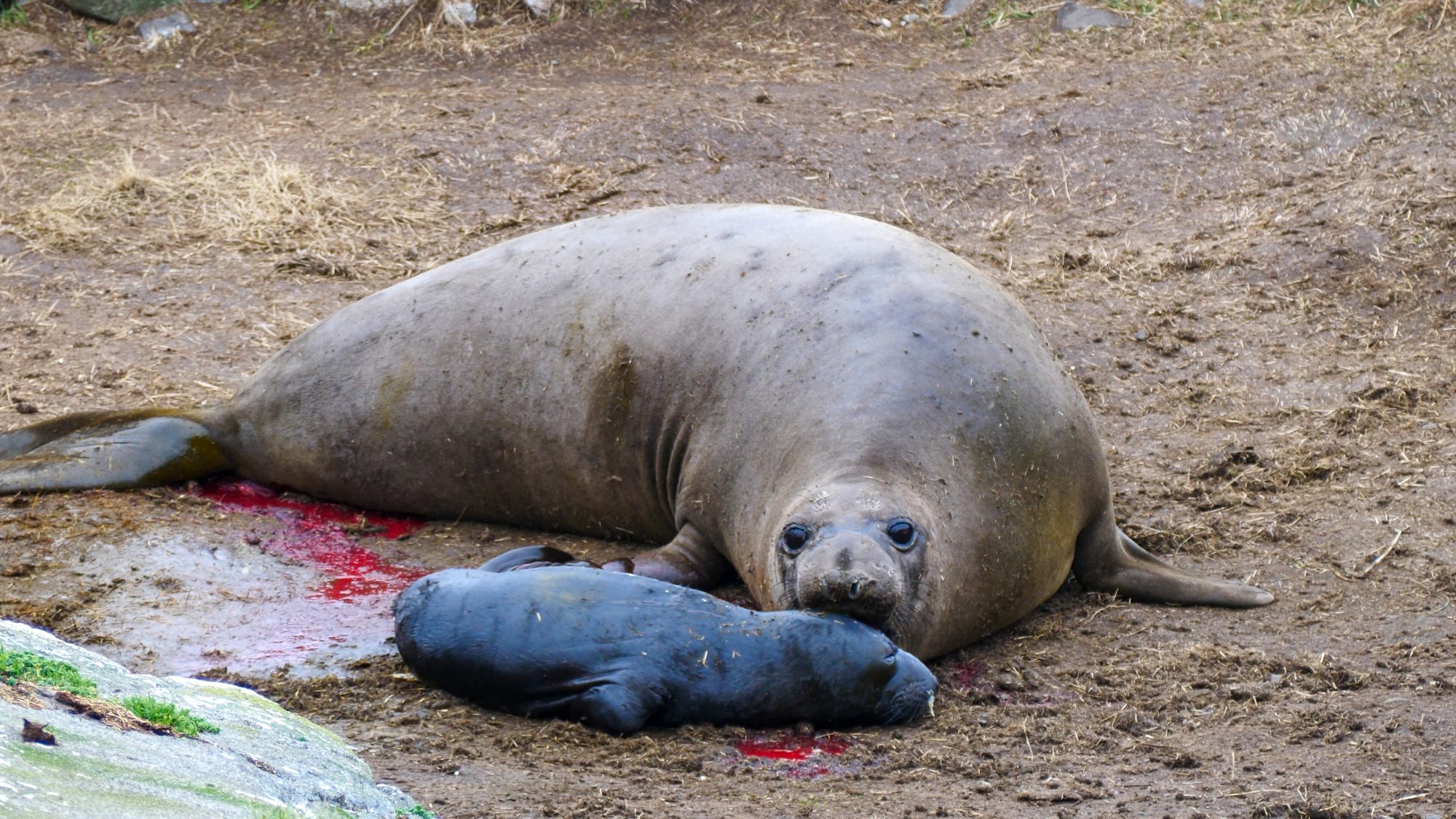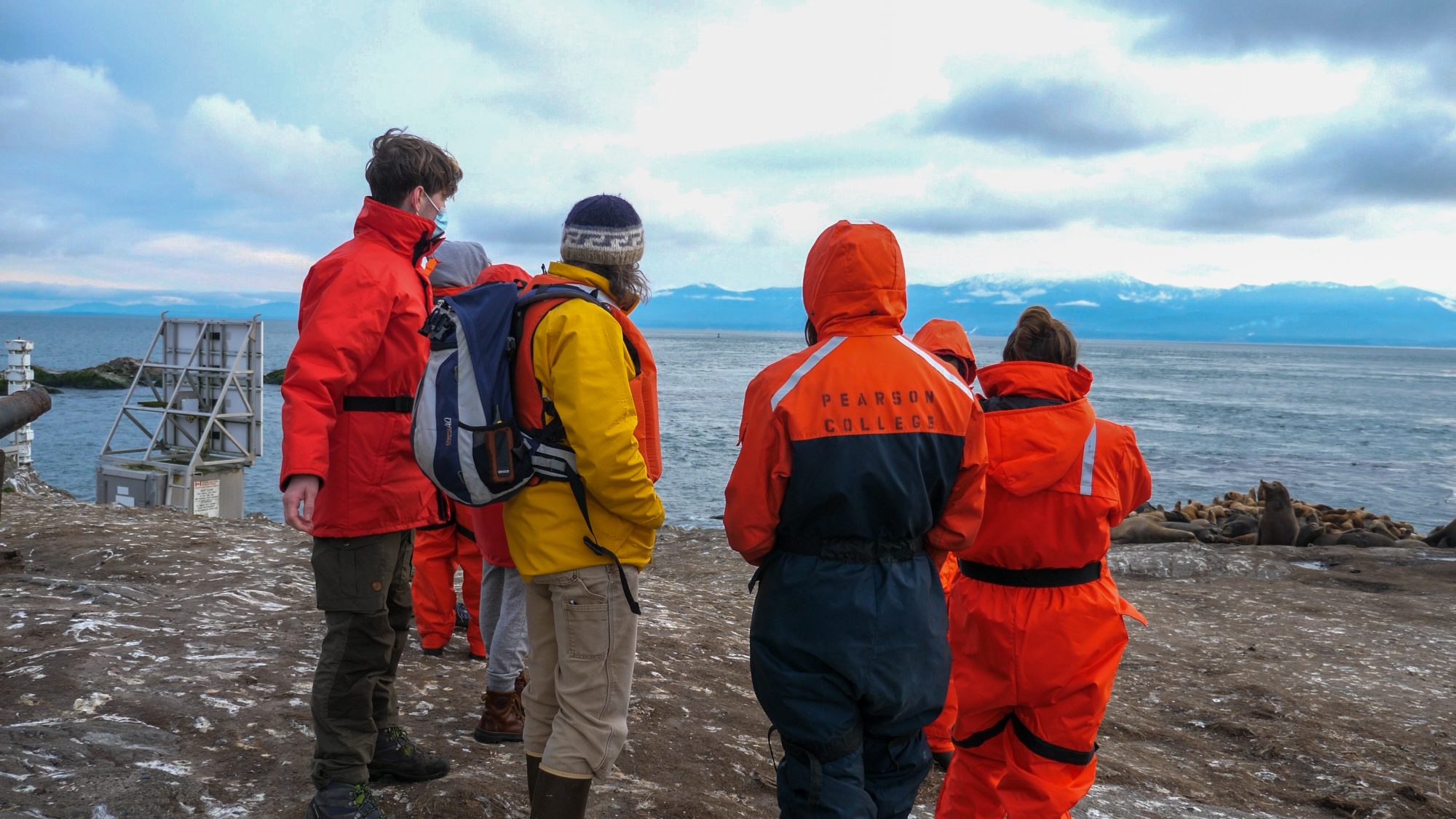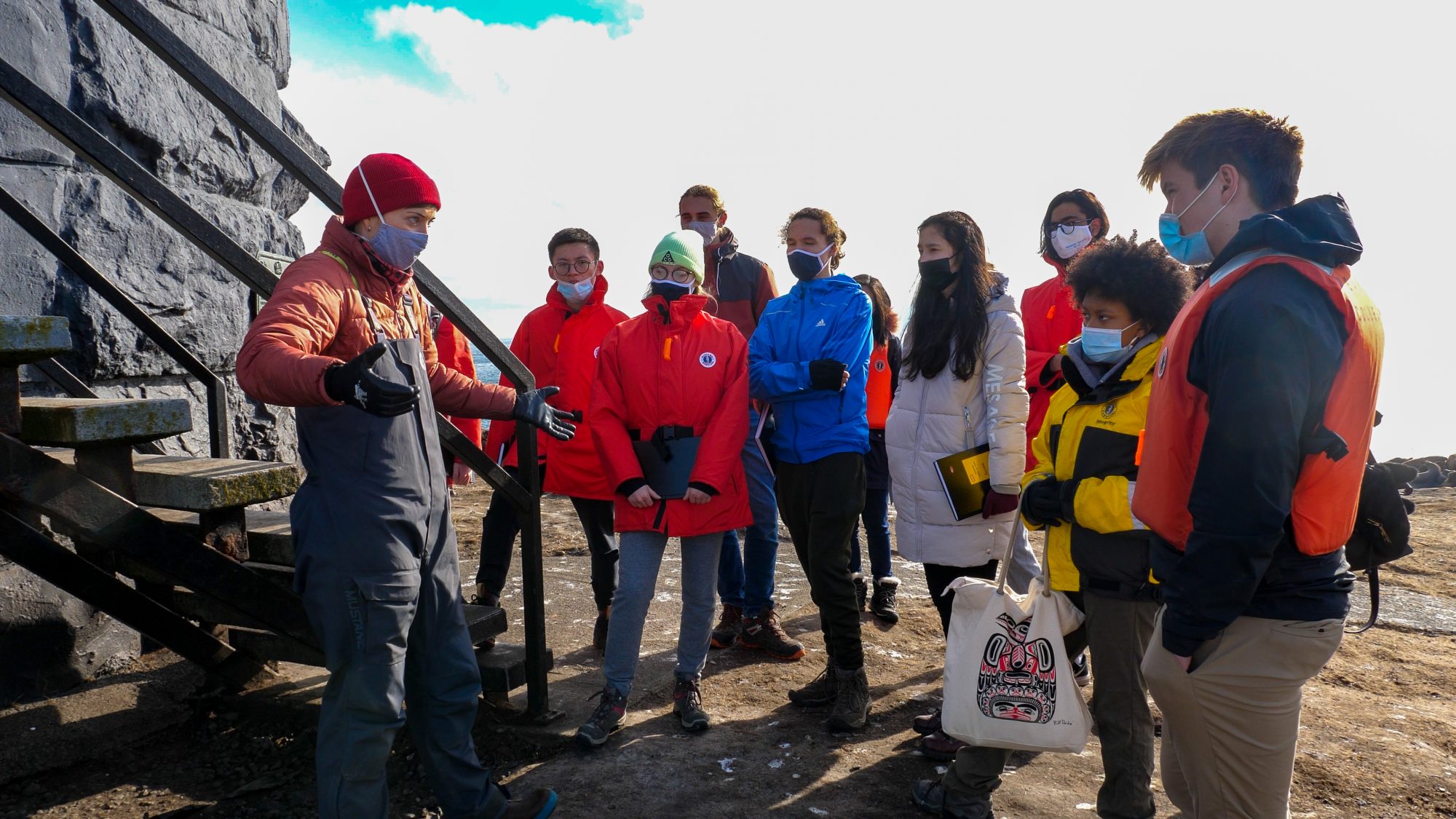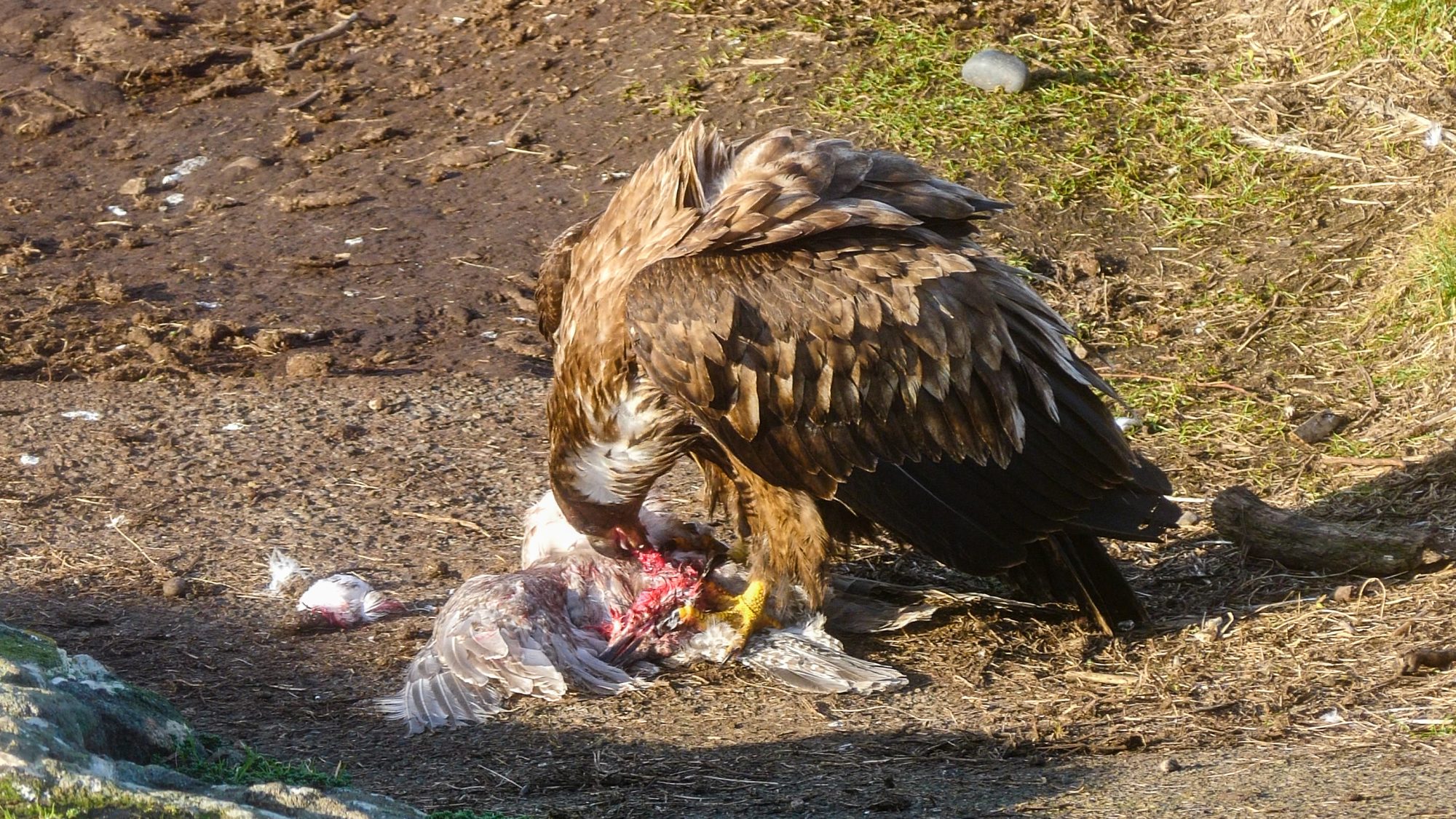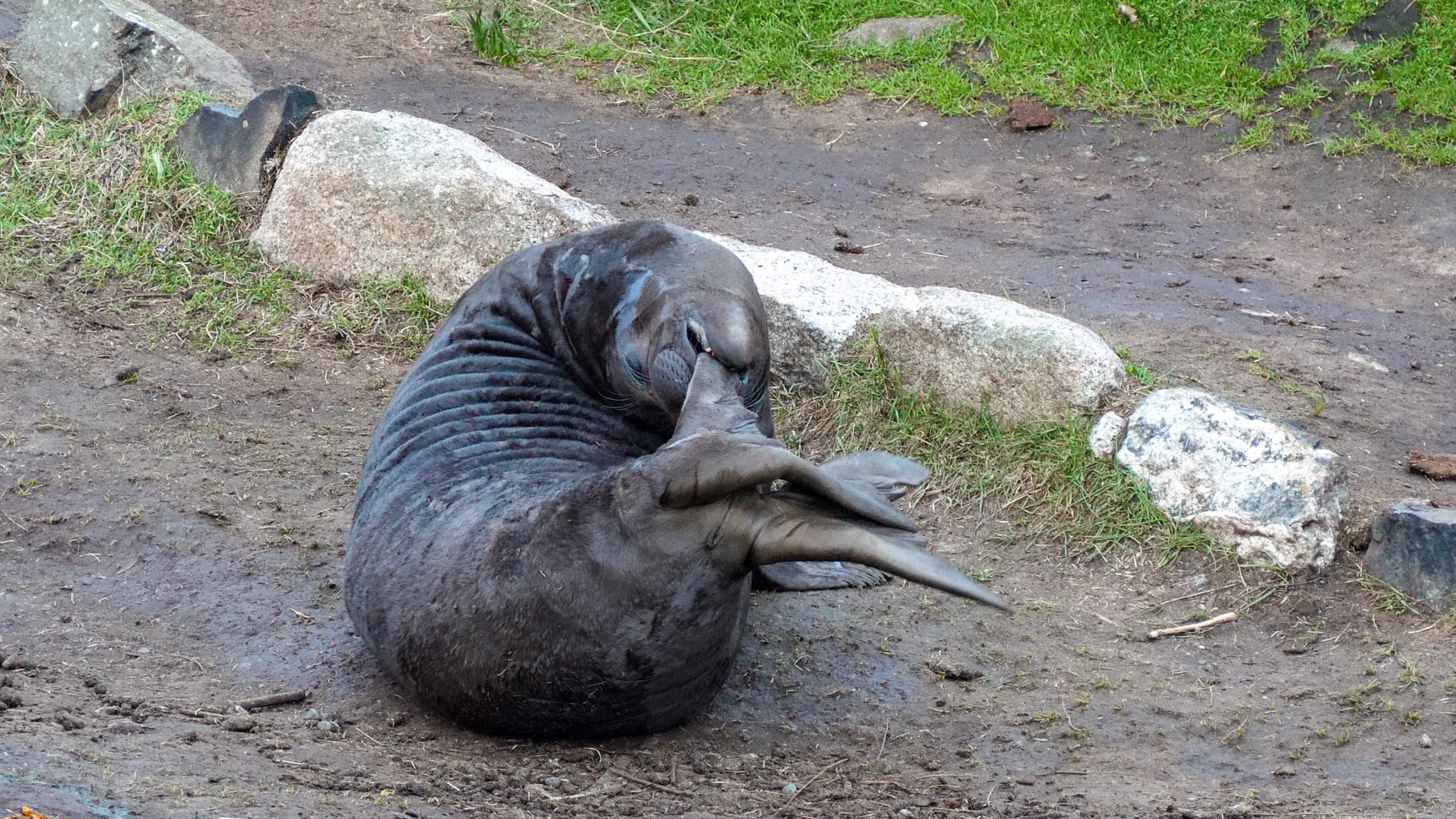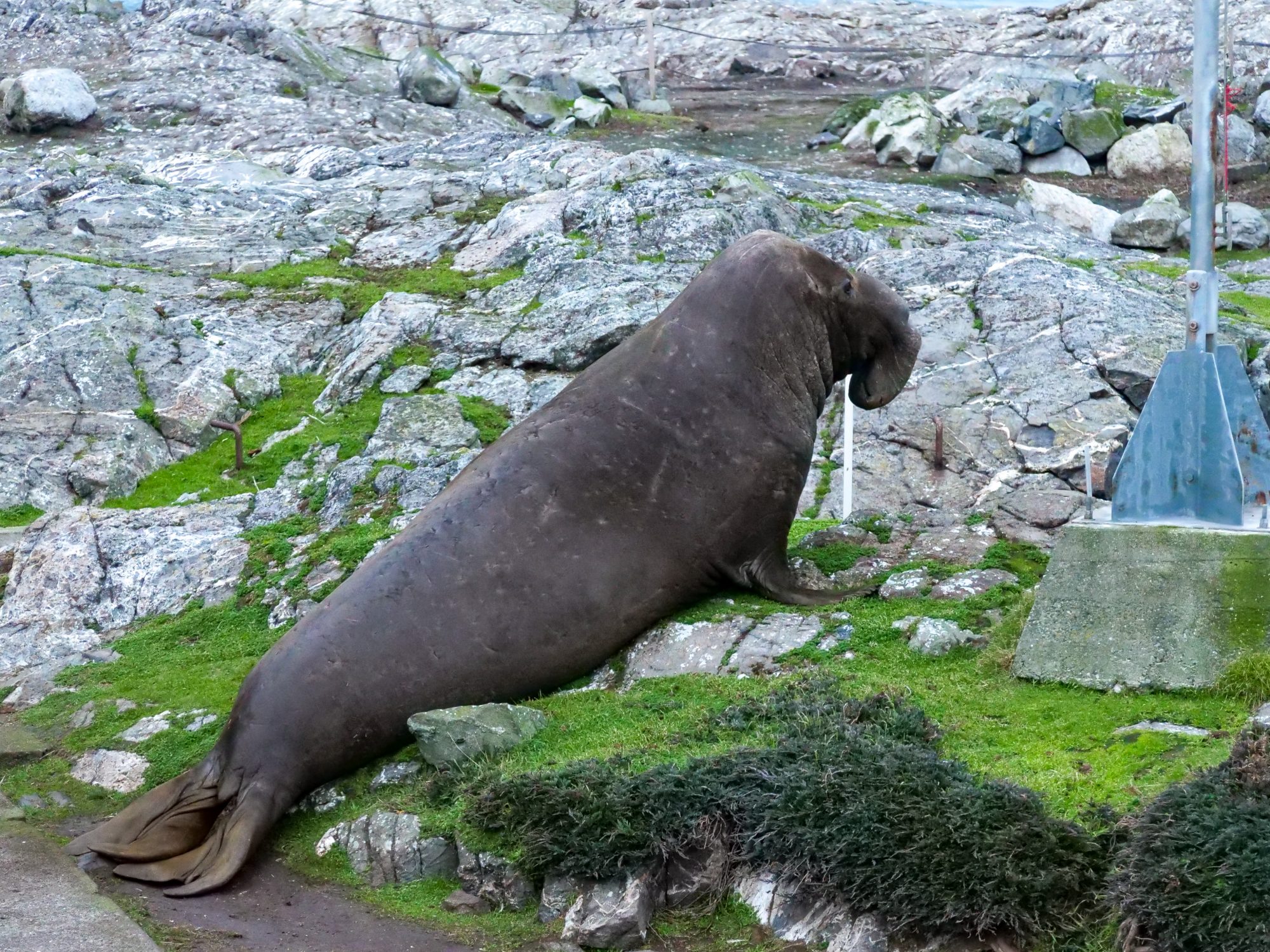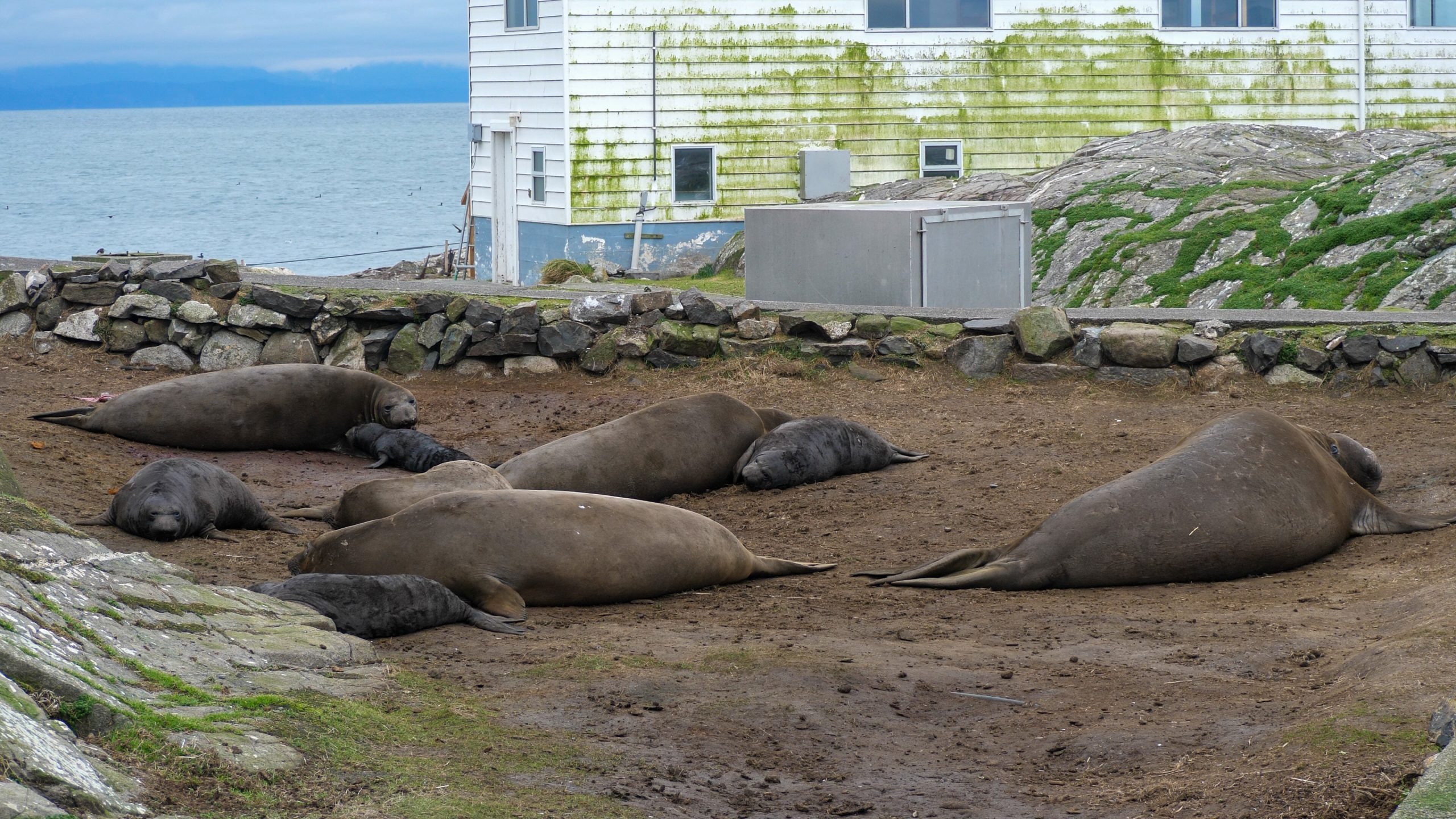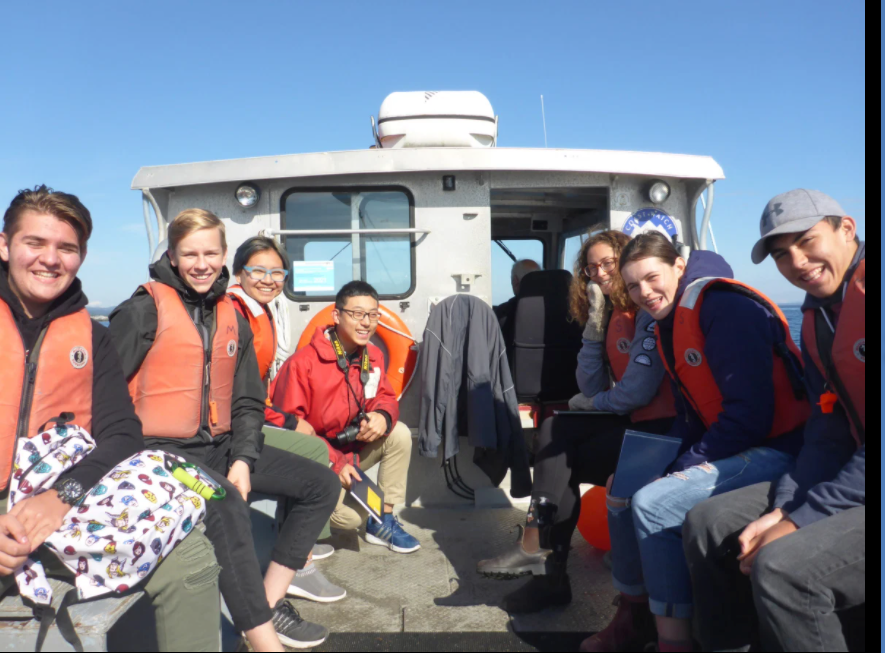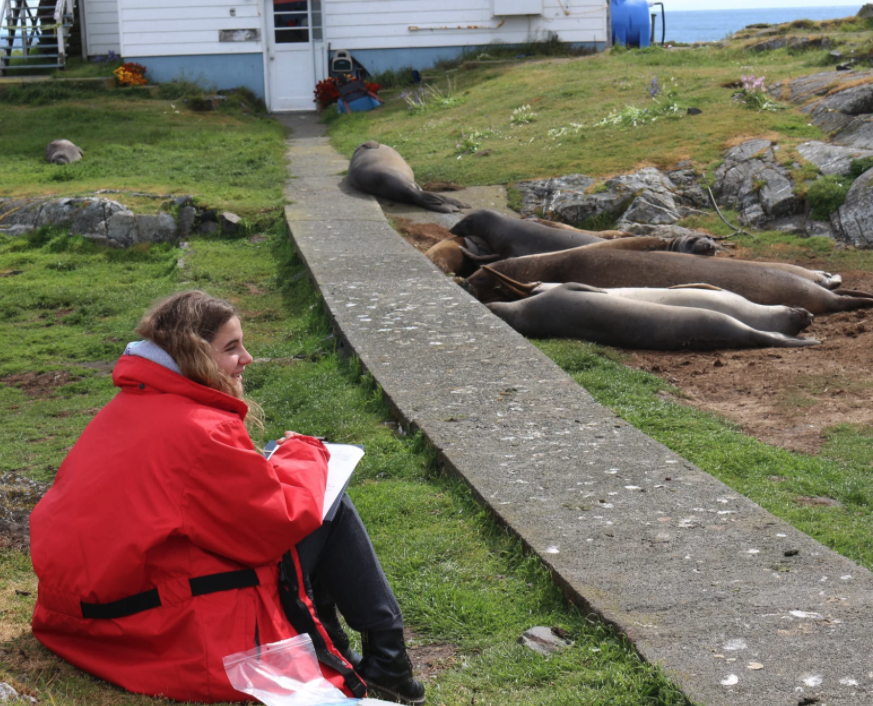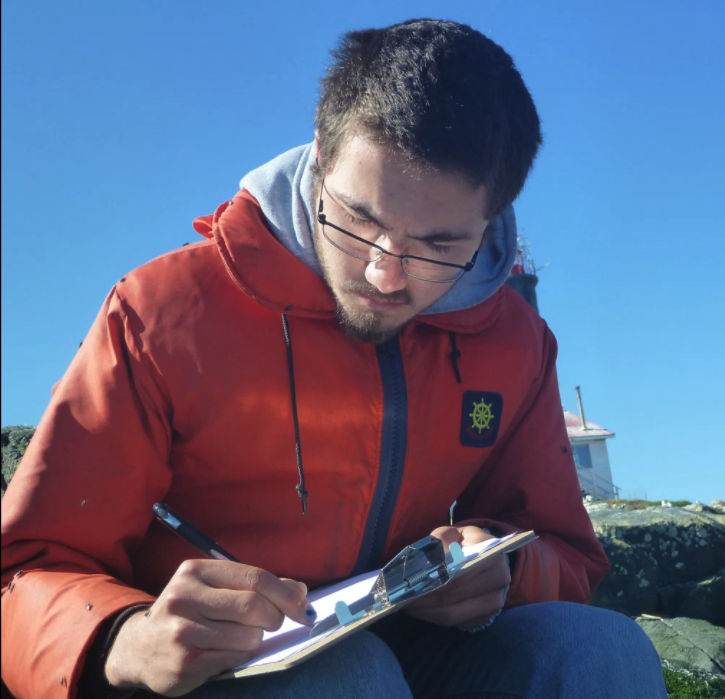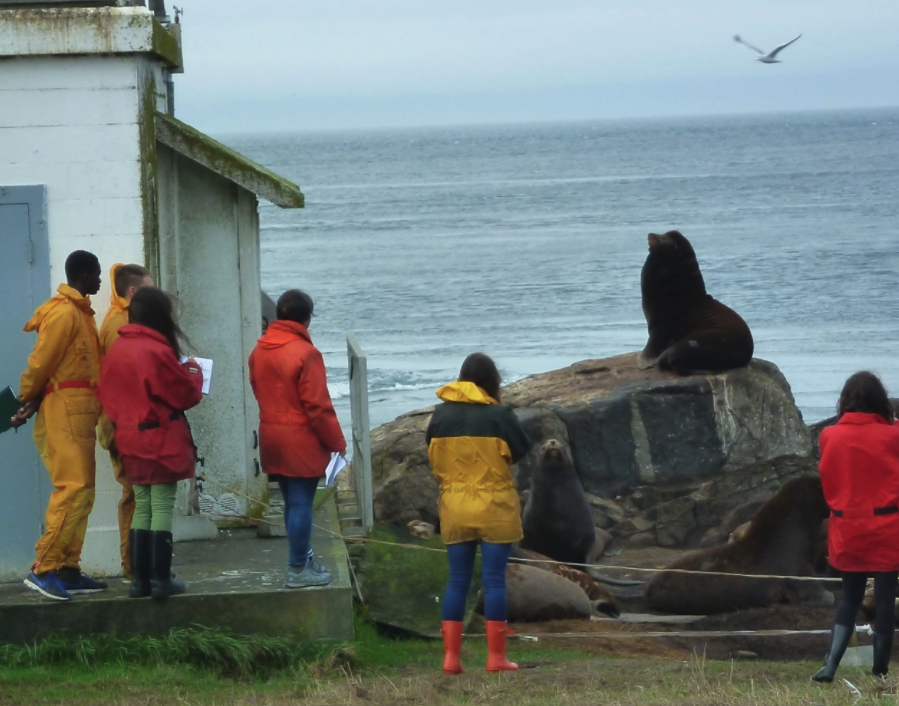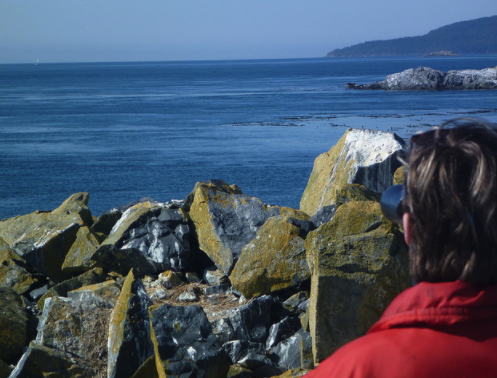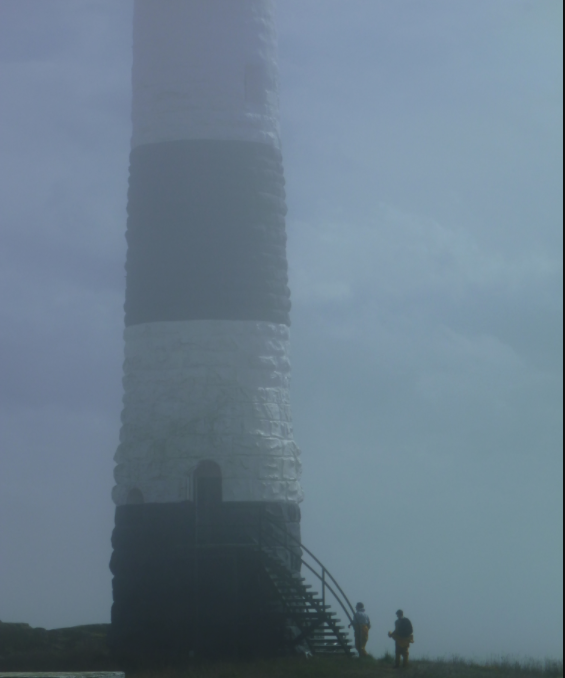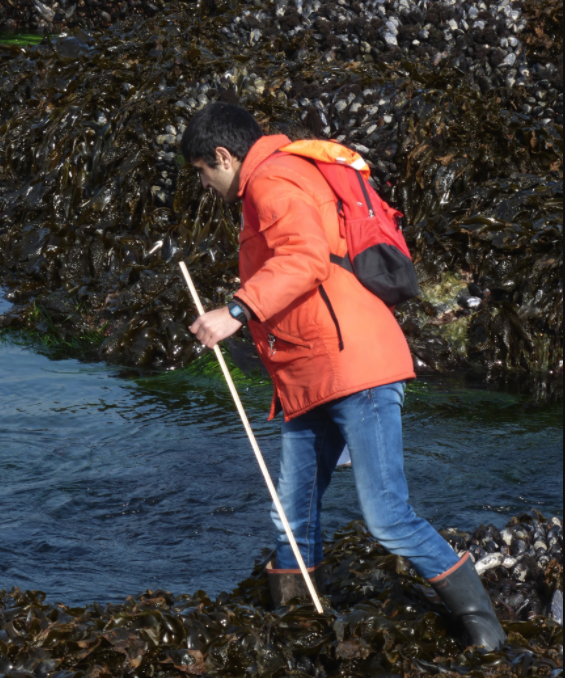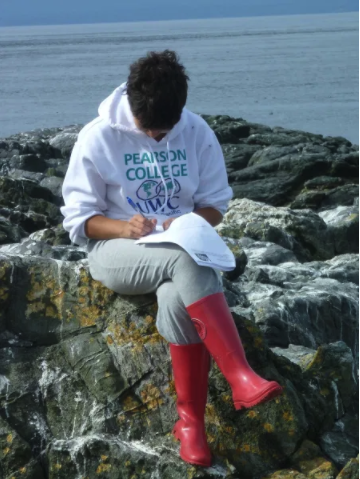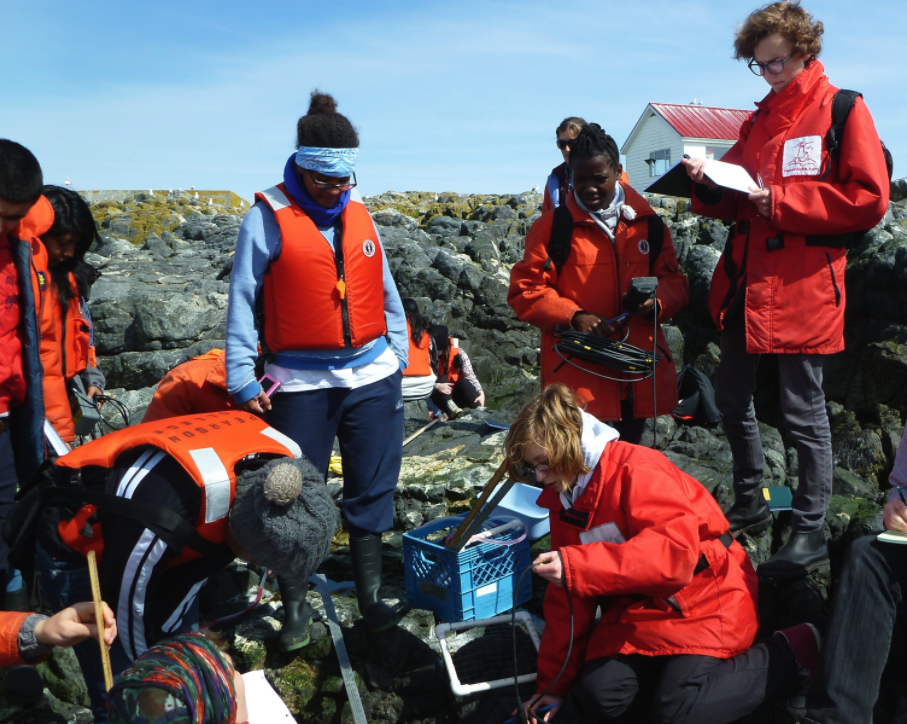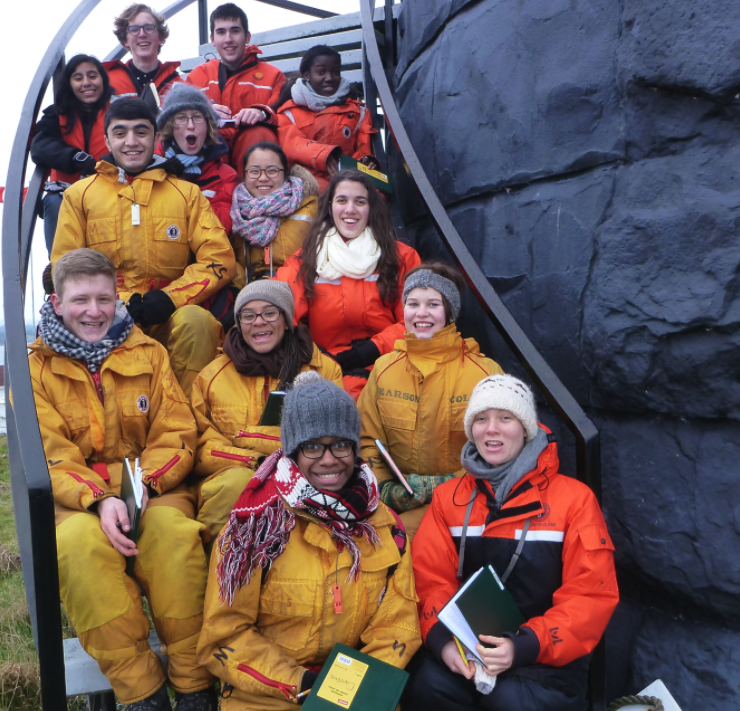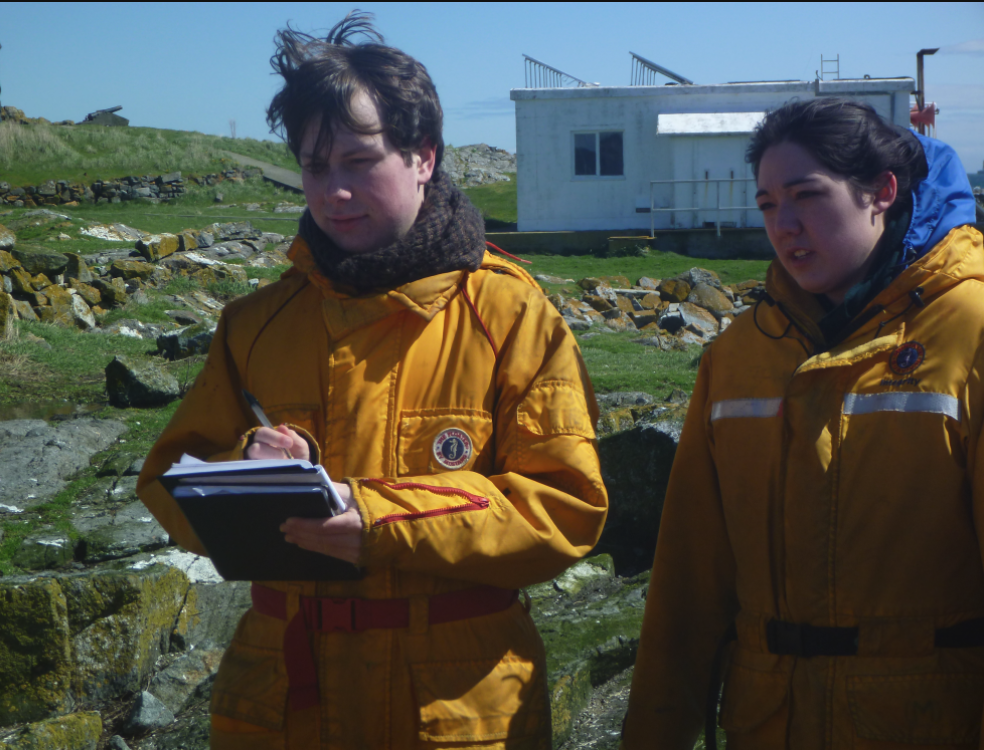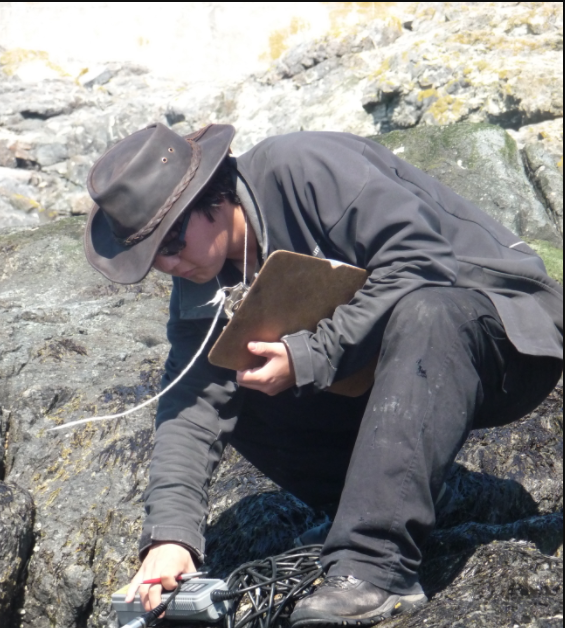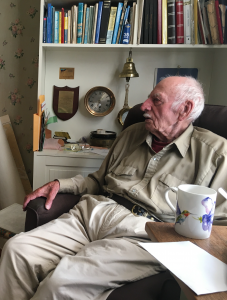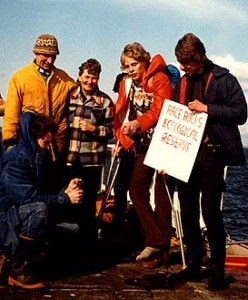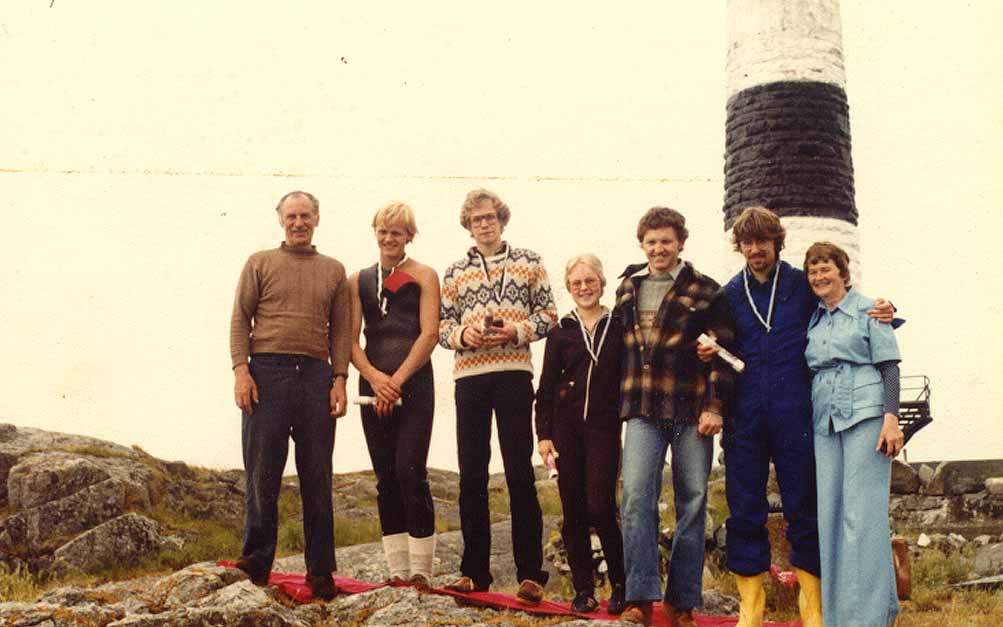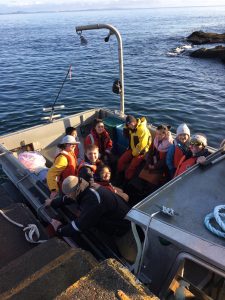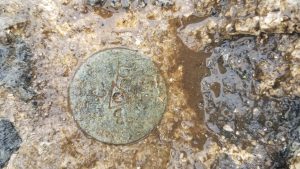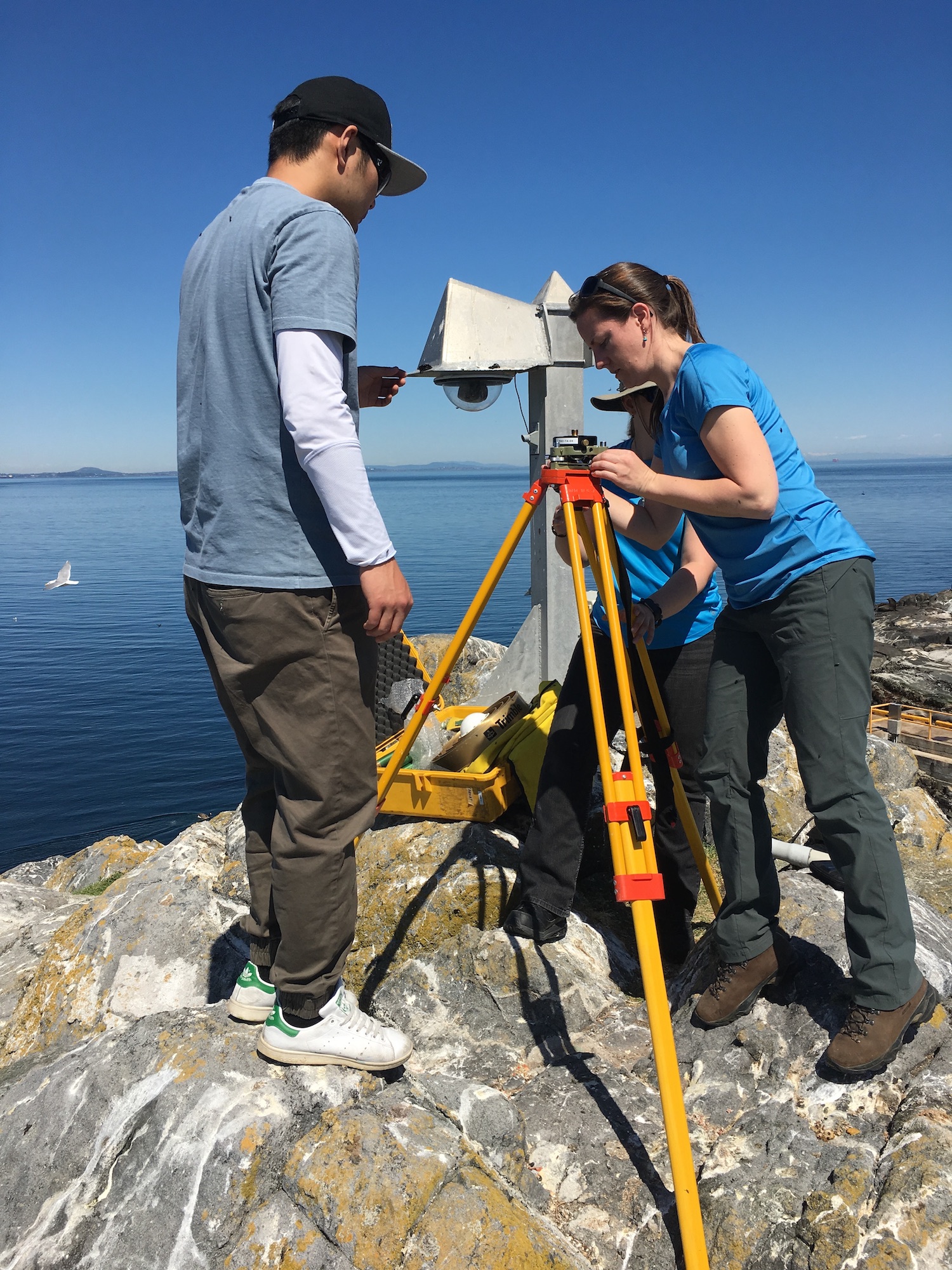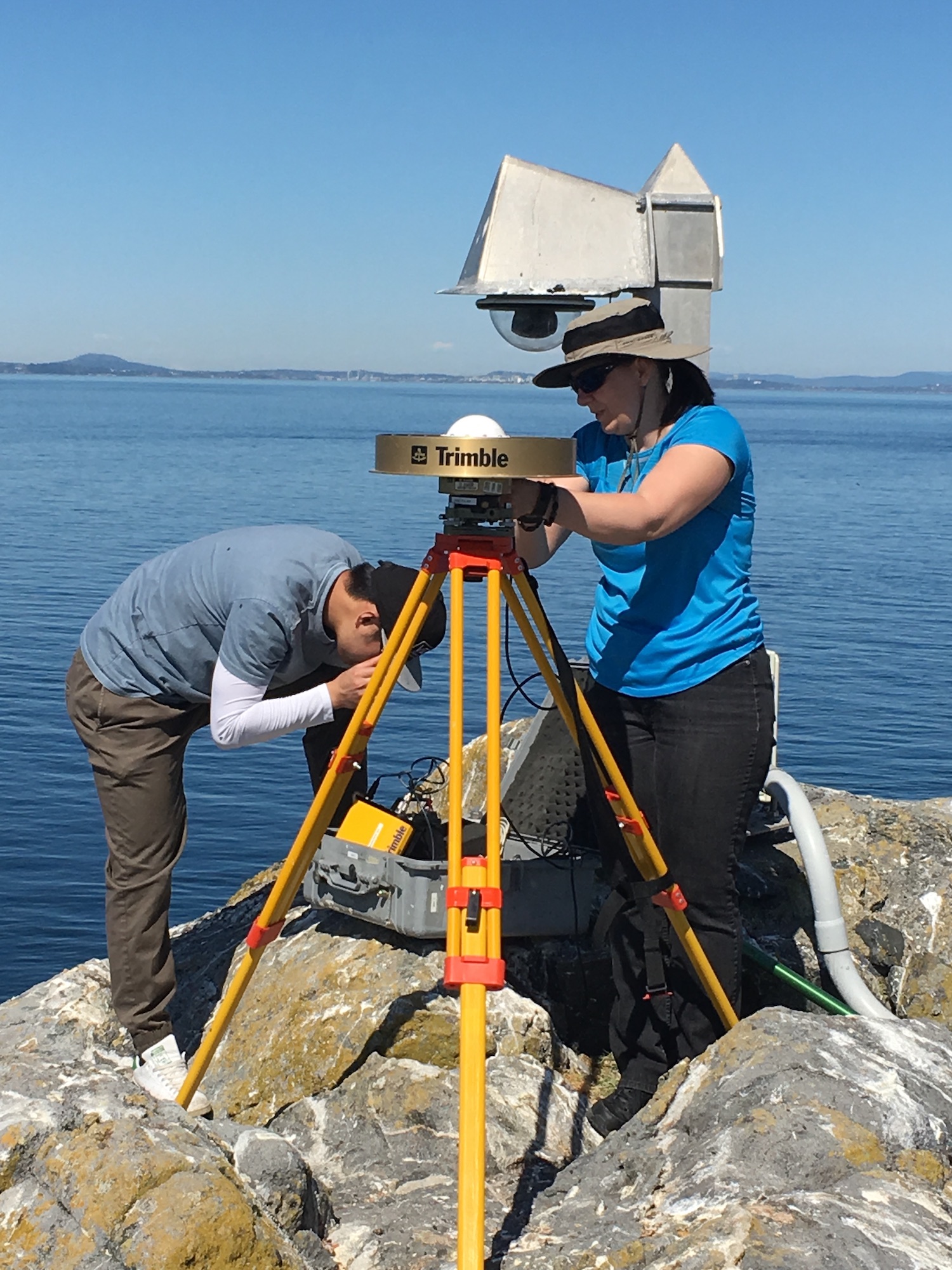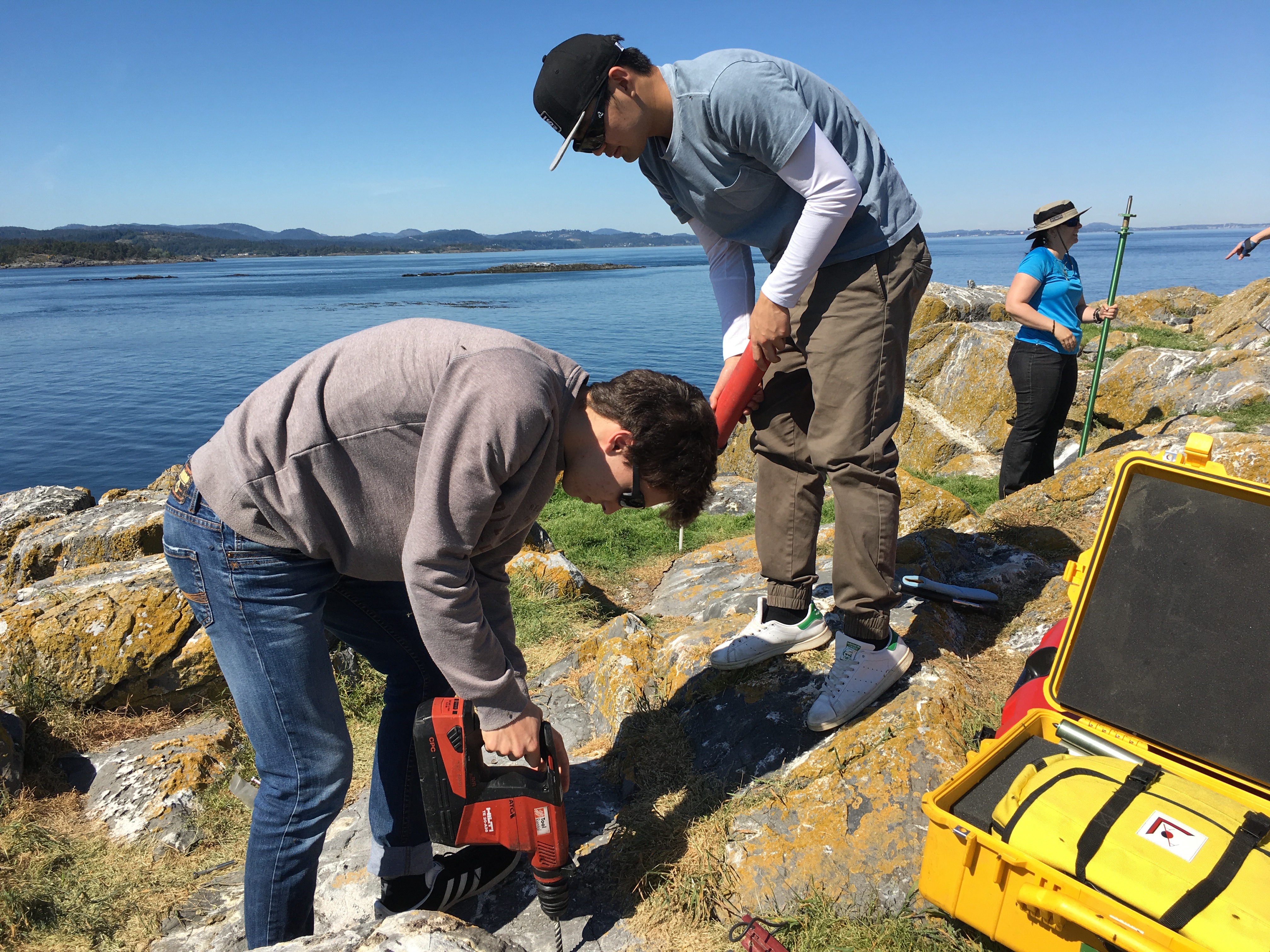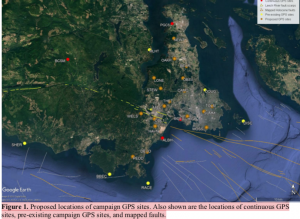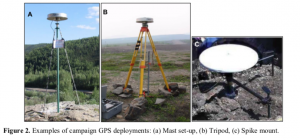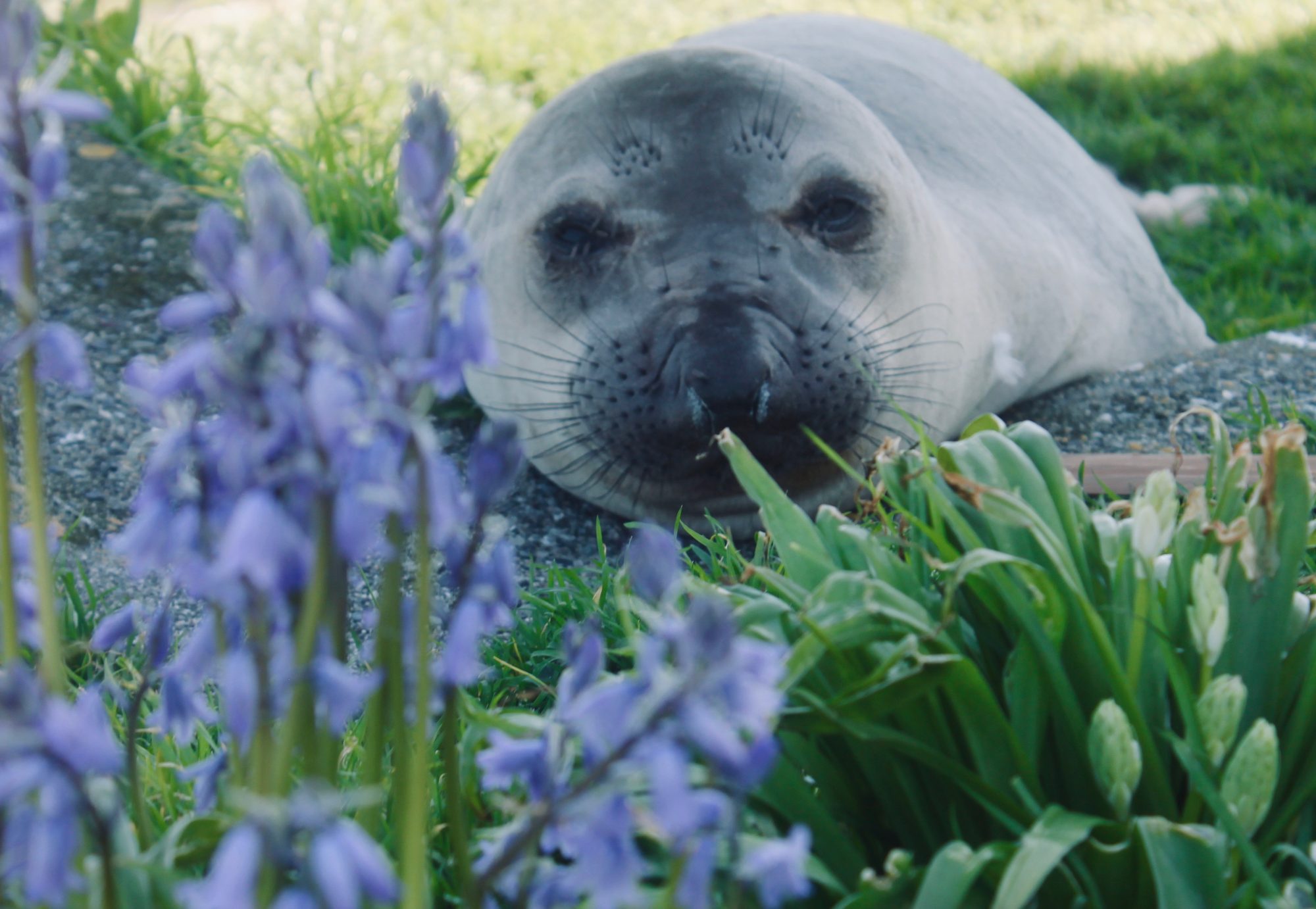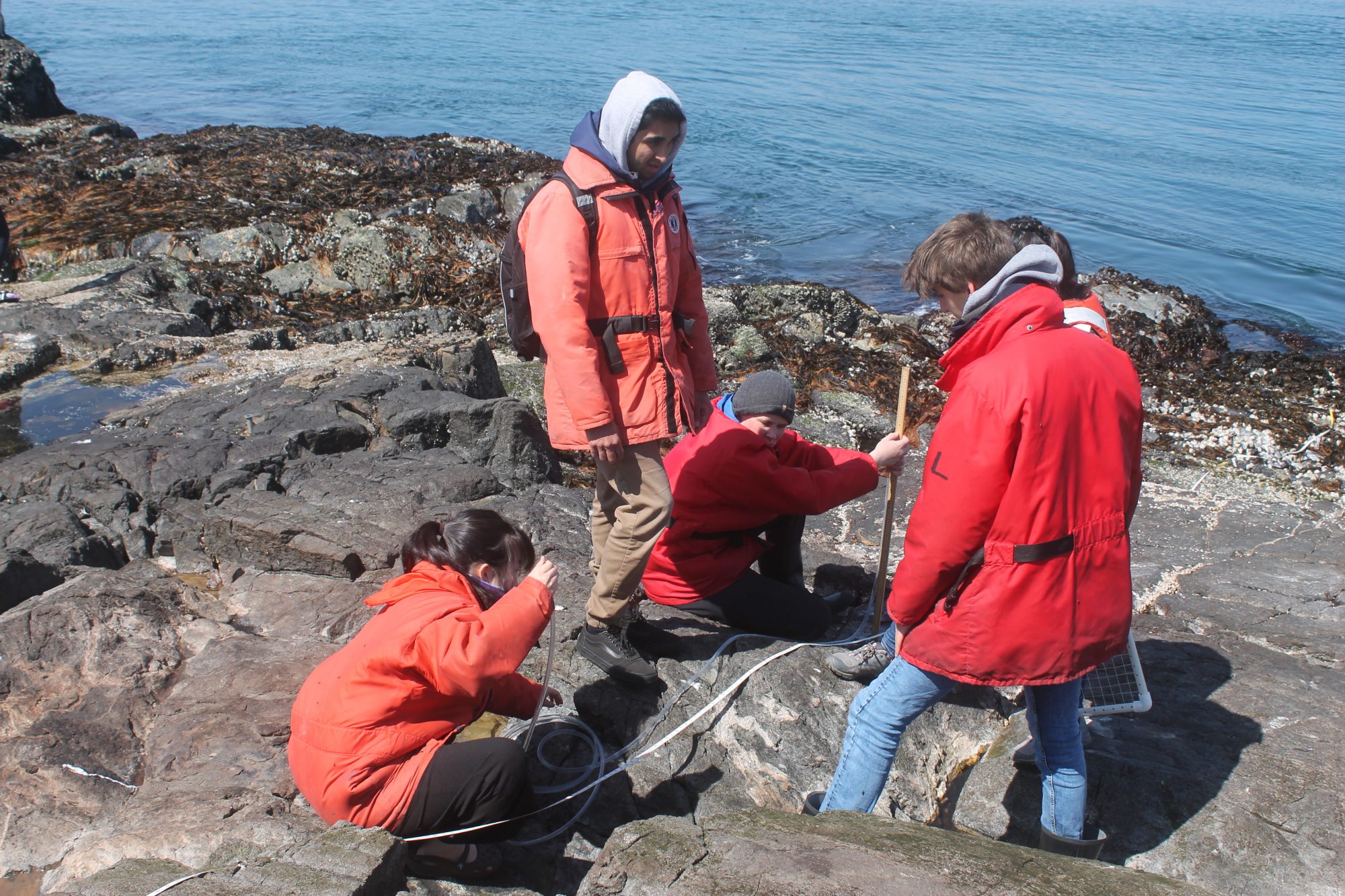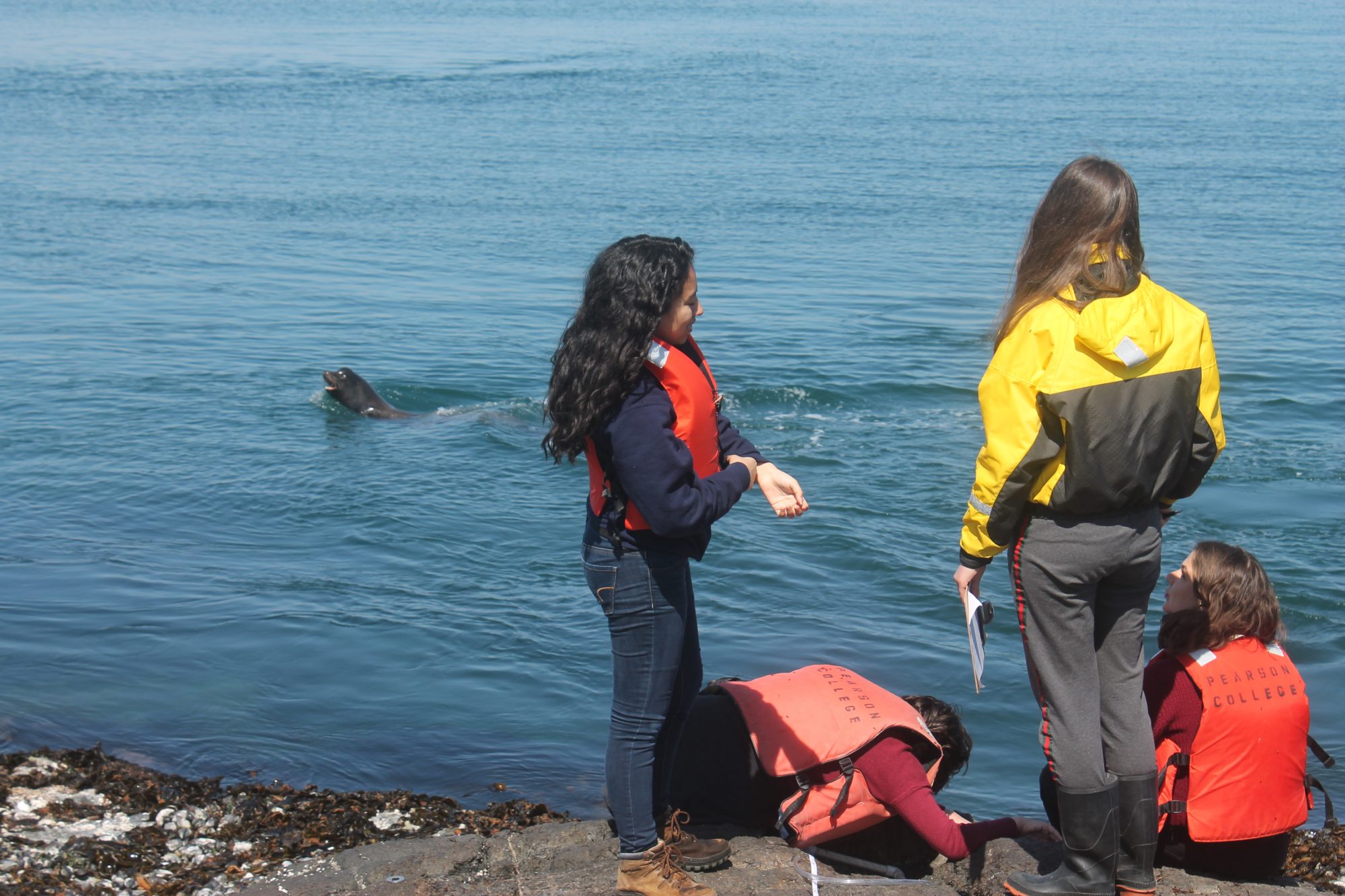Today was so action packed I’m not even sure where to begin!
I woke up just after sunrise as I knew today was going to be busy and I wanted to get a few tasks out of the way. At 6am it was already warm out with barely a breeze. The ocean was glassy as I cleaned the solar panels – which were yet again decorated by the birds.
Around 8:30am the first group of Pearson students were dropped off for their marine science exam which was taking place here at Race Rocks. By 9am we had 46 humans on the island which is a lot after not seeing anyone for a whole week. Today’s tide was one of the lowest I’ve seen since being here and its neat to see the rocks and small islands that are usually well below the surface.
Halfway through the exam we had a surprise visit from Coast Guard via helicopter to continue working on the fog horn. Thankfully all of the students were safely tucked away working on their exams down in the tide pools when it arrived. This time they had a smaller helicopter so they actually landed on the grass next to the tower rather than the helipad. Overall disturbance was limited aside from birds leaving the area (but immediately returning) and the minor panic exhibited by me.
If that wasn’t excitement enough, we saw 3 passing transient killer whales shortly after! Once again, they were quite far in the distance but always nice to see. One of these days I’ll see them up close!
On return to the school, one of the boats found a deceased harbour porpoise floating on the surface. I reported this to DFO and the animal was collected and brought back to the college where it can be stored in a freezer until the DFO team and veterinary pathologist are able to perform a necropsy.
The afternoon slowed down once it was just me and the animals alone on site. Ollie was relaxing in the kelp beds, the sea lions were quiet, and the sun was toasty. I ventured down to the rocks behind the student house to soak up some sun when something shiny caught my eye. Partially sticking out in the dirt I picked up what originally looked like some sort of bivalve or calcified shell, almost something you’d expect to see on a tropical beach. Upon picking it up I realized how heavy it was and that it actually appeared to be man made, with grooves that seemed as though they would hold rope or line. My next guess was that it was a lead fishing weight of some sort or maybe a piece of similar equipment. I rinsed it off and sent some photos to colleagues to further inquire. One of the other Eco Guardians, Derek, helped me to ID it as an “open-end strain insulator” and it supports guy wires/cables by working under compression. Through a page on the Maine Historical Society website I was also able to learn that this porcelain egg like tool was made in 1900. How wild is that! I know this island holds more history than I’ll ever know, but never did I think I’d stumble across a little piece of it among the dirt and the goose poop. I’m going to have a read through some books here tonight and see if there are any photos or mention of it!
- From the website of Collections of Maine Historical Society
Wow, okay I think that is everything for today! Race Rocks will never cease to amaze me.
…I guess I spoke/posted too soon! Shortly after publishing this blog post I spotted a brown pelican circling the reserve and figured it deserved a mention!
Additional info:
Ecotourism vessels: 10+ busiest day I’ve seen so far!
Weather:
- Sky: Blue skies and sunny
- Wind: High of 8 knots, Low of 2 knots
- Sea: Glassy
- Temperature: Low 8•C, High 22 •C
** All wildlife photos taken at the furthest distance possible, and may be cropped to improve detail! **

